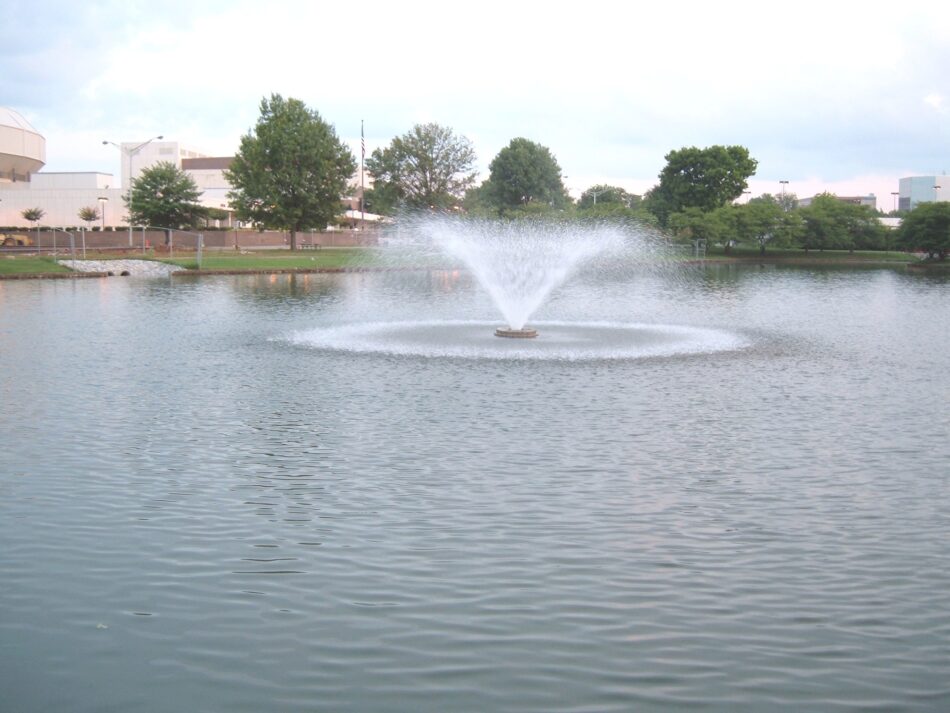
1.) A water feature that used to be in the water of Big Spring at the Von Braun Center in Huntsville Alabama.
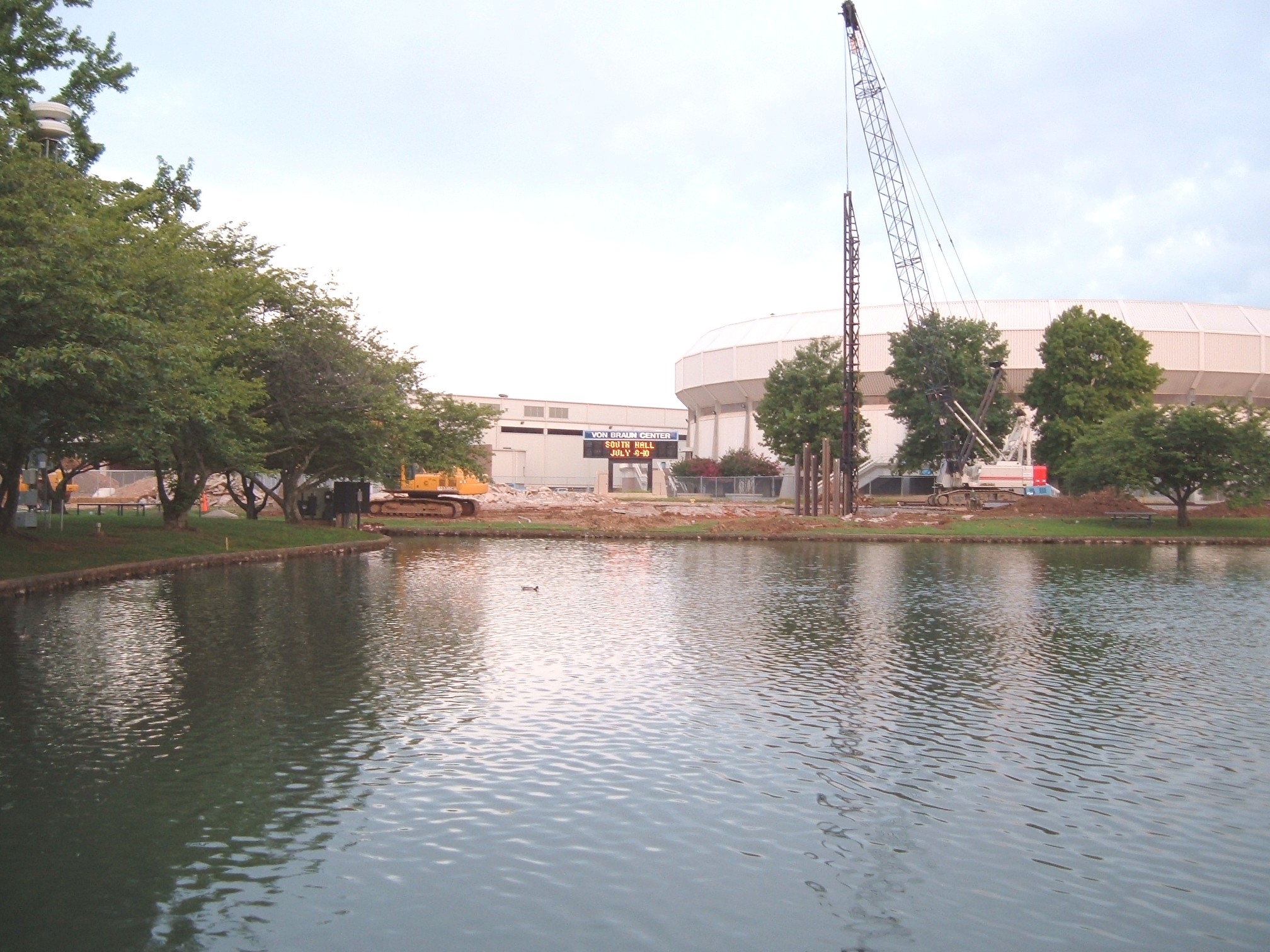
2.) The area that will be de-watered using an AquaDam cofferdam system.
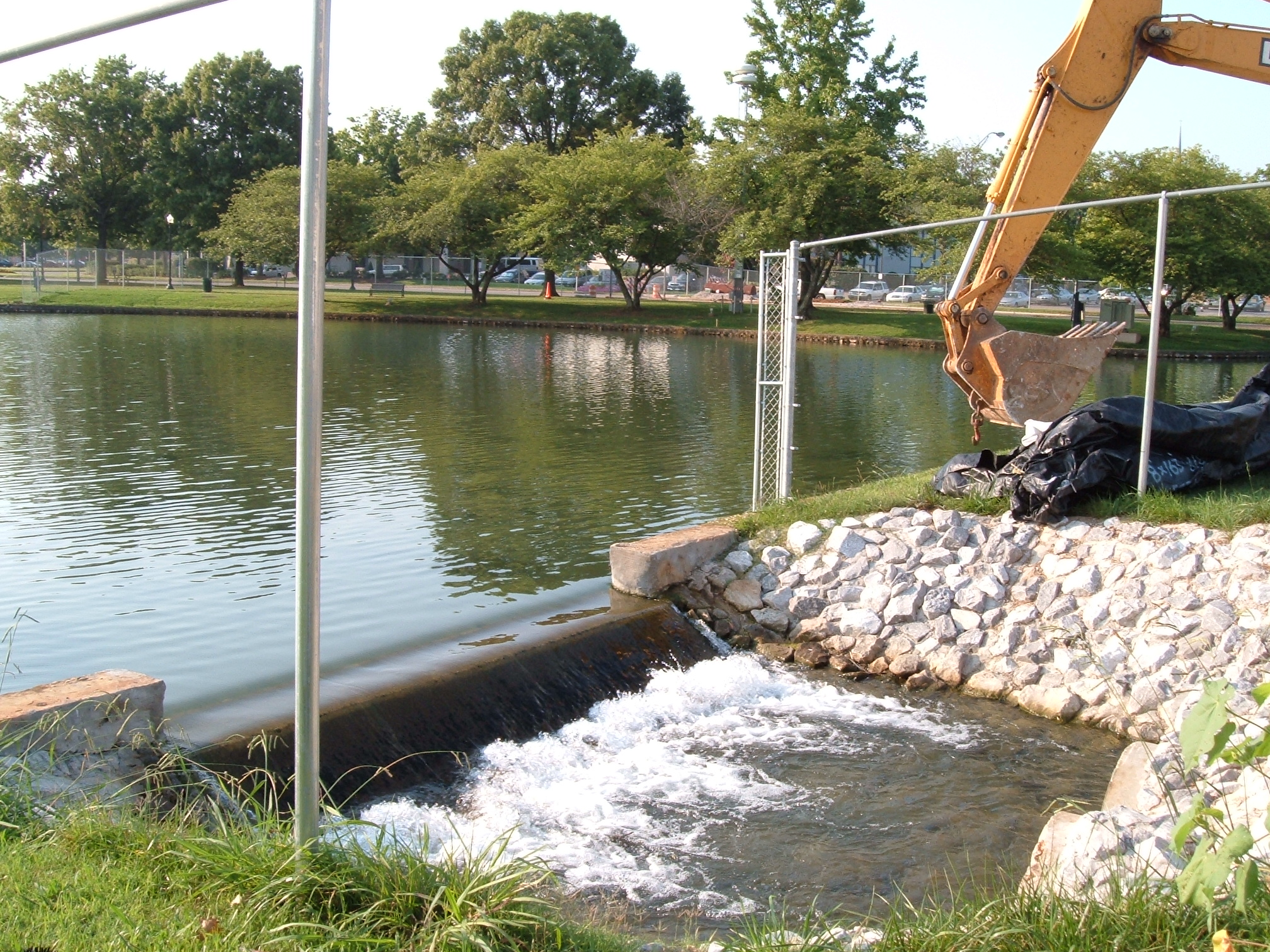
3.) An overflow used to help control the water depth of the pond. The starting bank for this AquaDam cofferdam system will be where the excavator’s bucket is. A starting bank is needed for the open end and fill-tubes of a single closed end (SCE) AquaDam. The open end and fill-tubes of a SCE AquaDam must be elevated higher than the full height of dam along its given path. An AquaDam will only reach its full height at the lowest elevation along its given path.
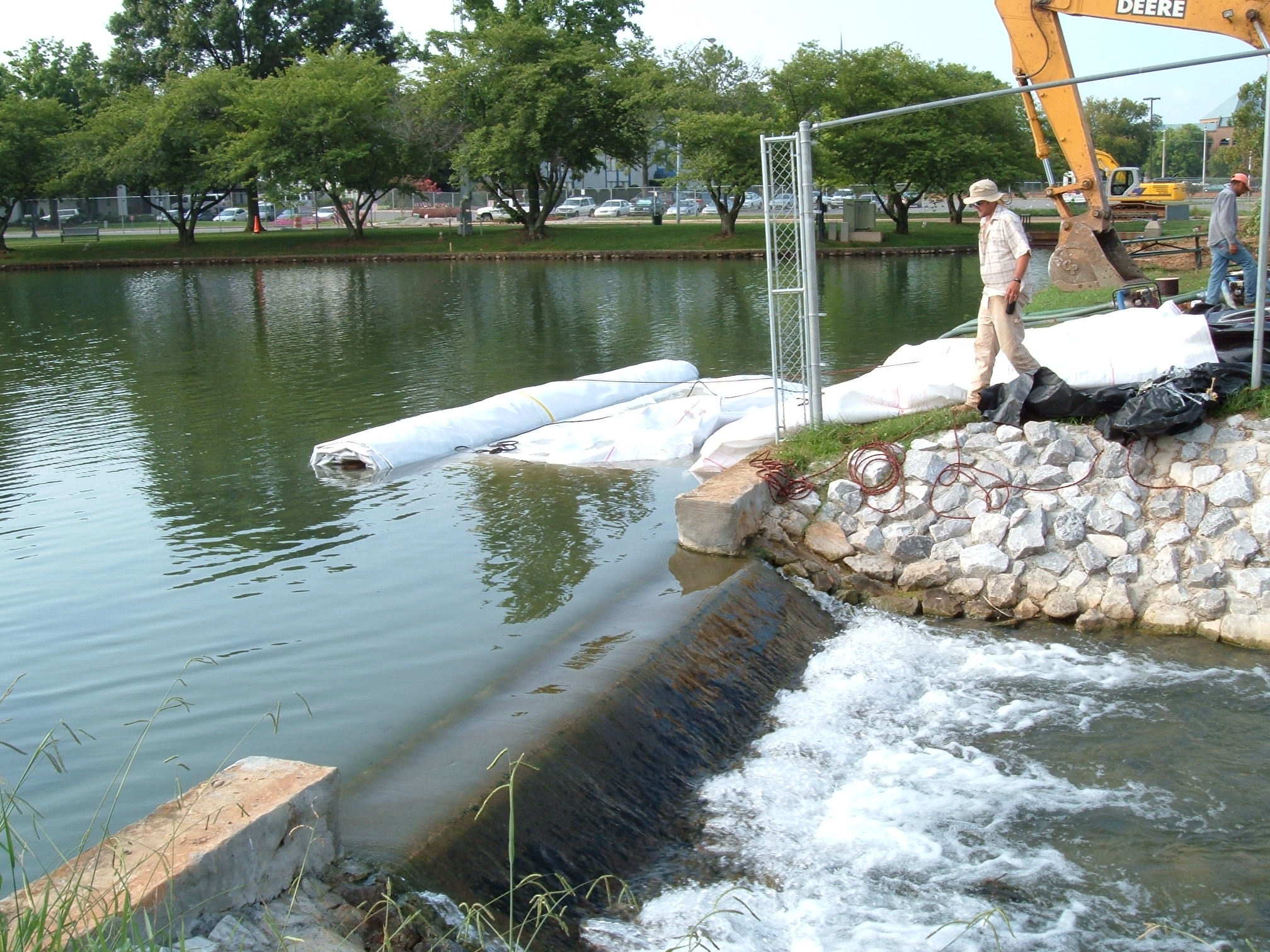
4.) The first AquaDam has been launched from its starting bank and is filling. Ropes have been run beneath, around the roll end, and back to shore to help steer the direction of the AquaDam while it is filled with water.

5.) Workers used ropes and an excavator to pull the roll end around making a turn.
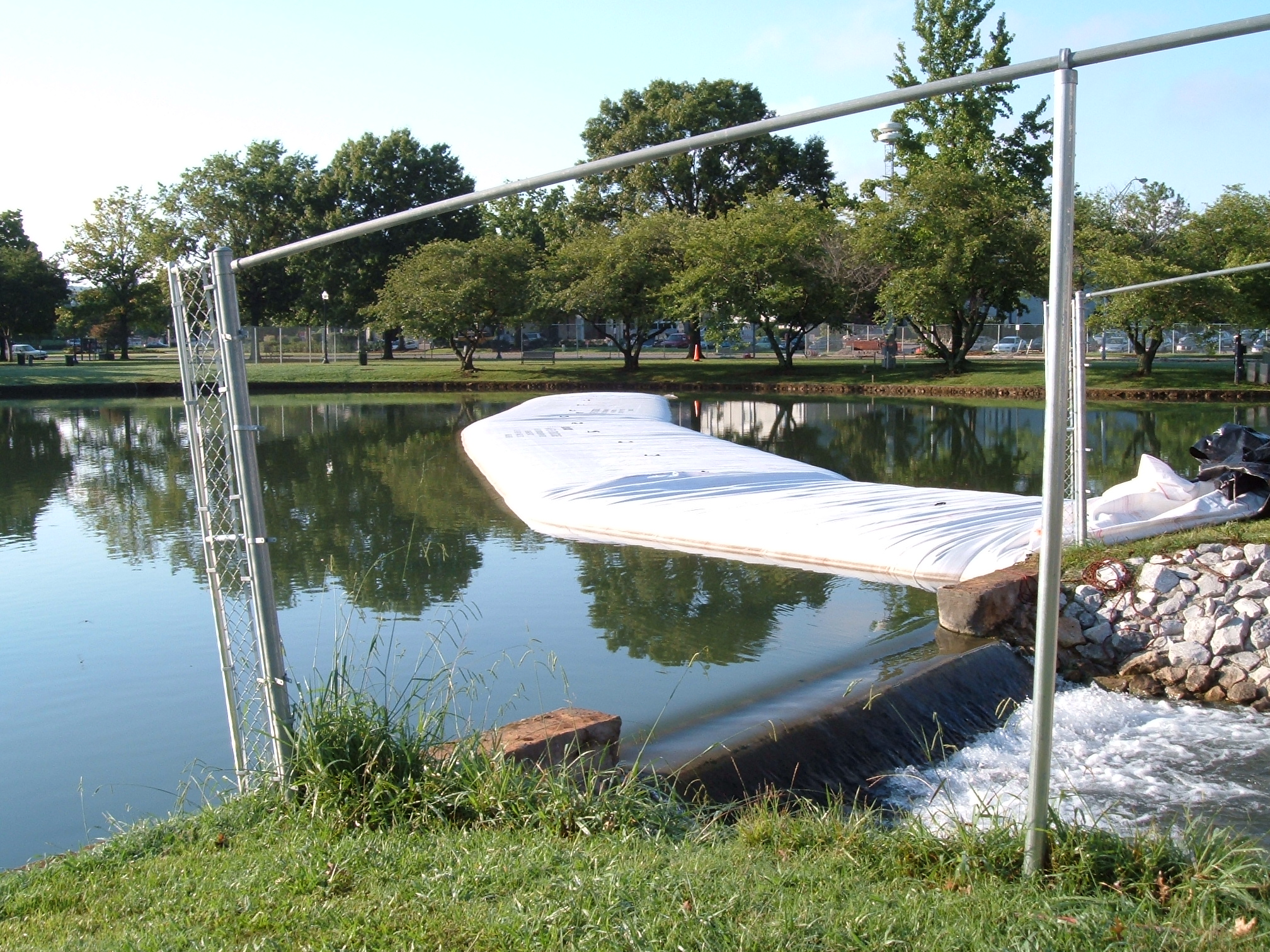
6.) The first SCE AquaDam has completely unrolled and is almost full.
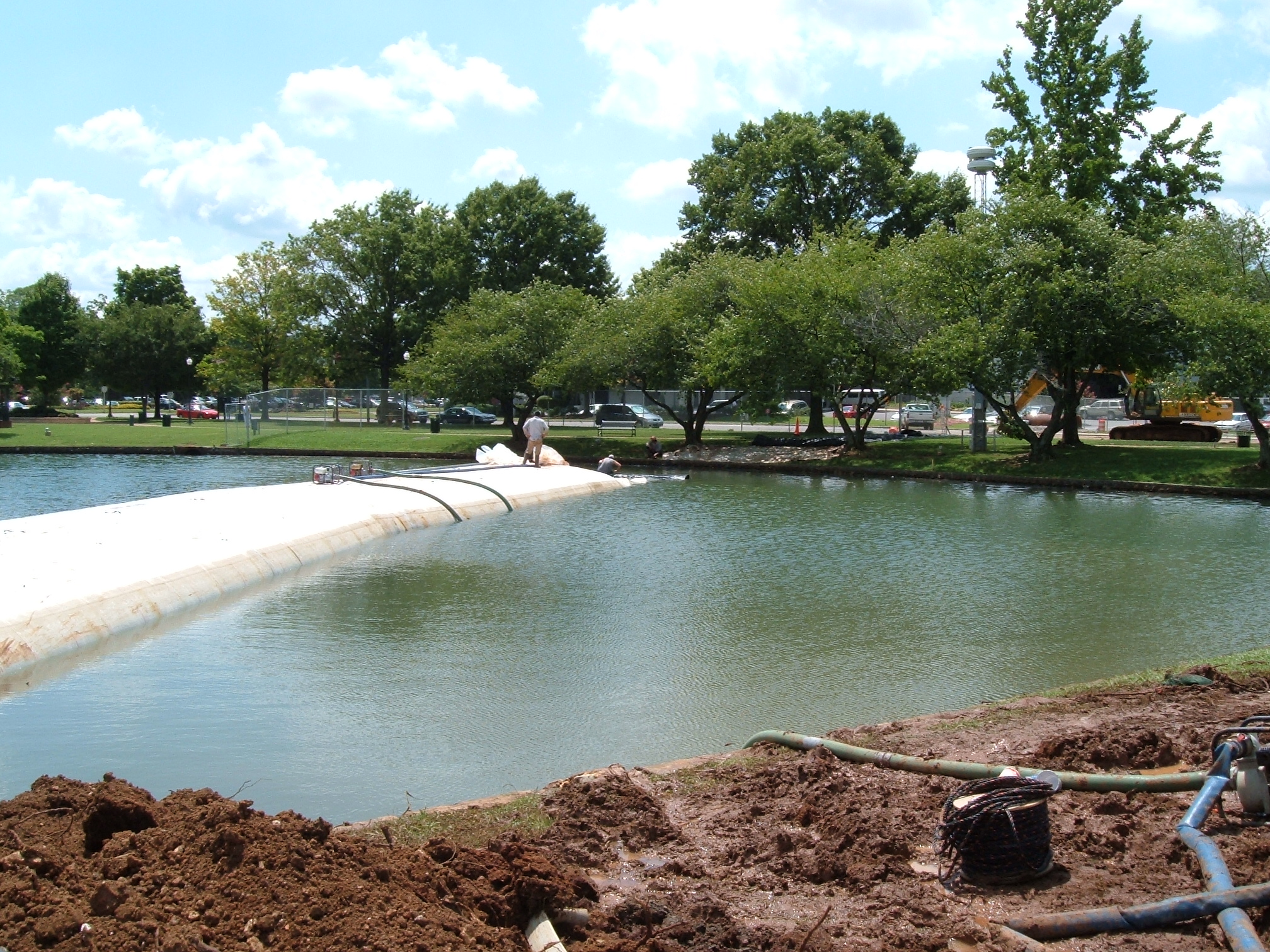
7.) Another SCE AquaDam was attached to the end of the first one with a connection collar. Workers pulled the fill-tubes of the second SCE AquaDam up through the connection collar and bloused its open end out up on the closed end, inside the collar of the first dam. These two AquaDams will have smaller AquaDams used for support on the inner perimeter.

8.) The inside of one of the turns. Notice the tiny bubbles?
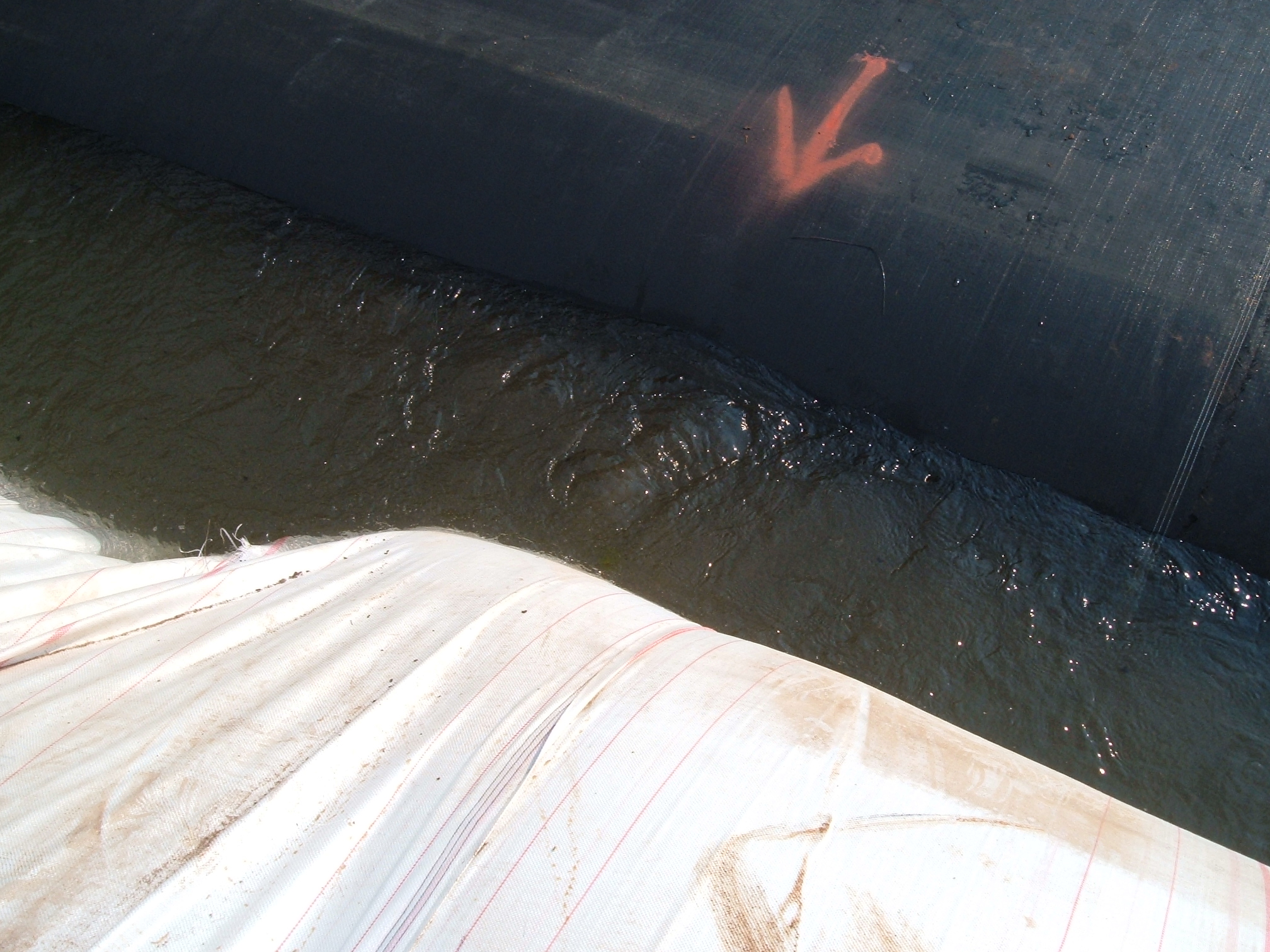
9.) After all the AquaDams were installed and de-watering started, pressure caused water to bubble between the larger (main) and smaller (support) dams. This type of boiling usually will eventually settle out. The AquaDam will typically settle into the mud.
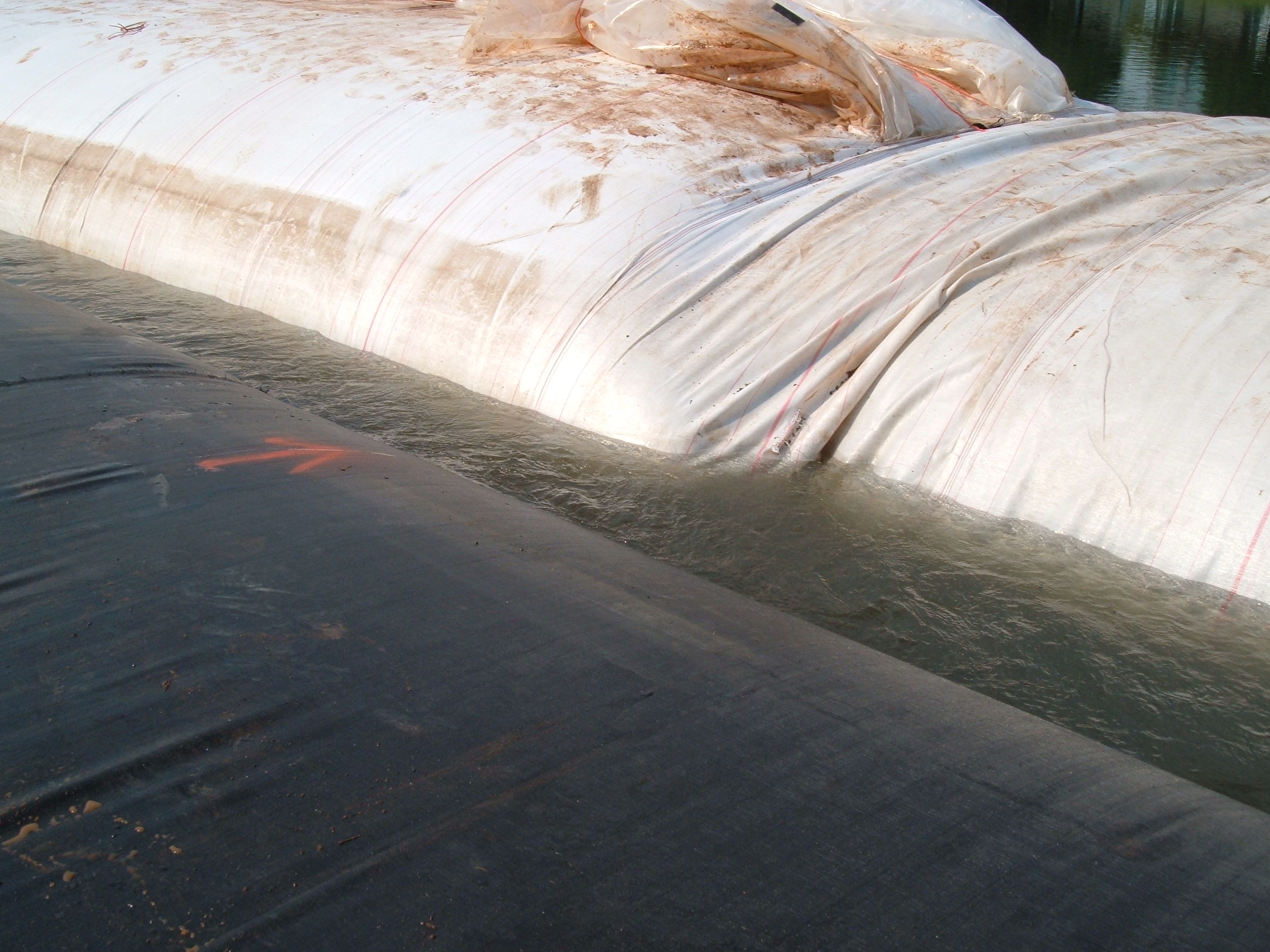
10.) This bubbling may sometimes be due to softer muds that have aquatic creatures tunnelling and living in the mud. Additionally, the weight of an AquaDam will cause it to sink into softer muds. Soft mud depths must be included with the maximum controllable water depth. A worker should push a measuring rod into the soft mud when measuring the maximum controllable water depth for an AquaDam.
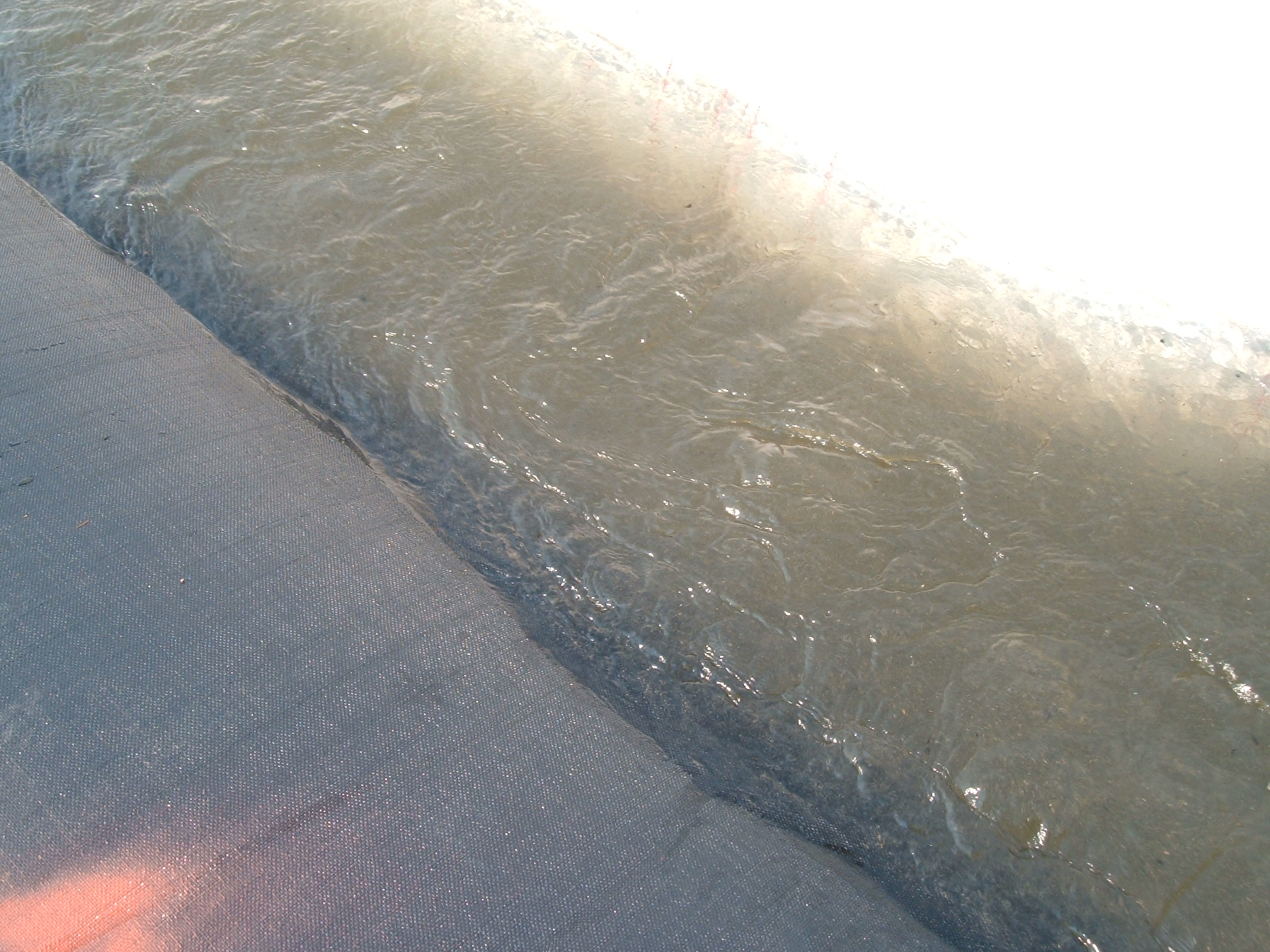
11.) A close-up of the water bubbling between a main and support AquaDam.

12.) Standing on top of the first main SCE AquaDam, looking back at the starting bank. Workers needed to add non-abrasive fill material to the bank to raise the elevation for the open end and fill-tubes.
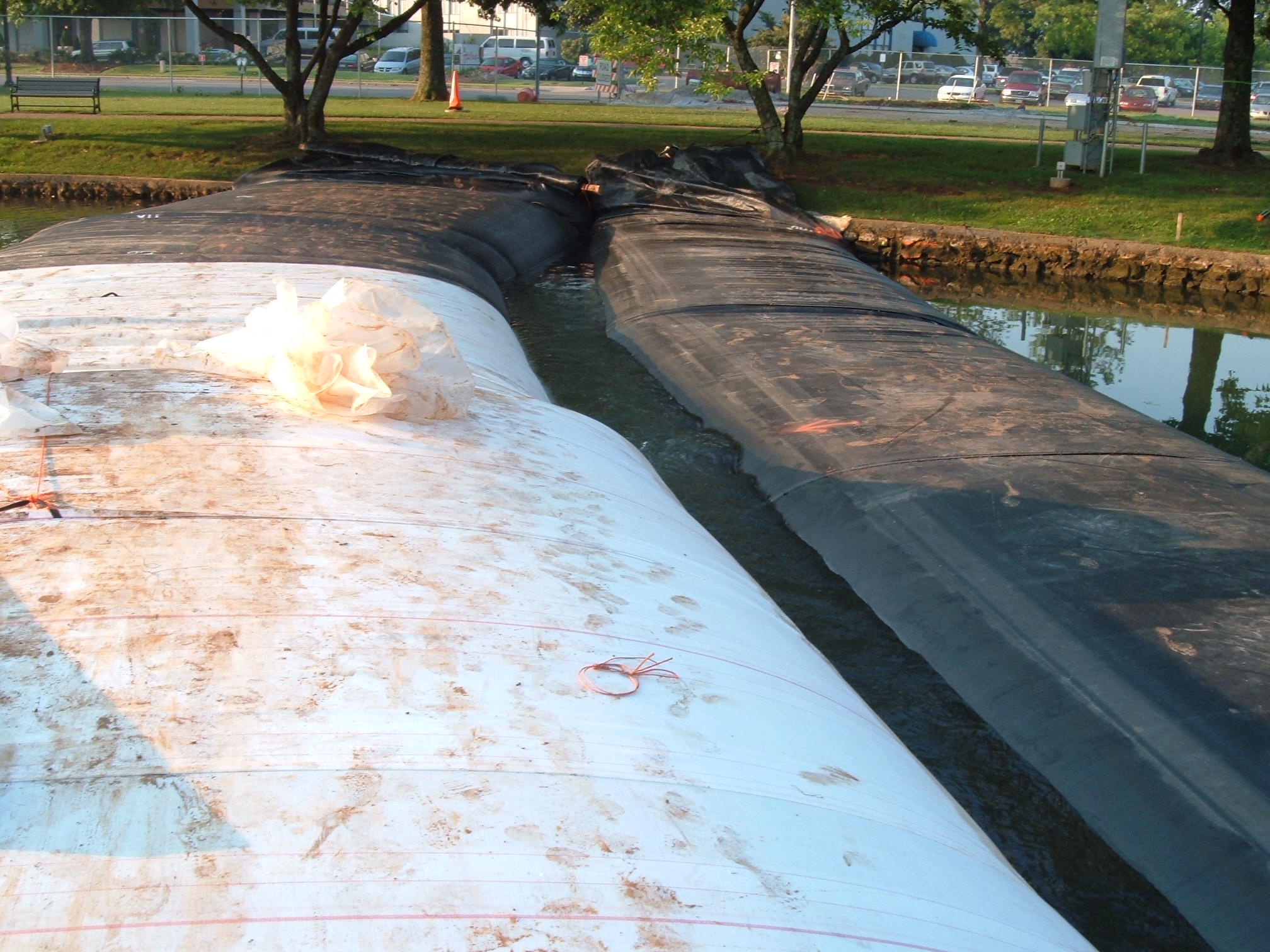
13.) Looking at the ending bank for the cofferdam system. The work area is to the right.
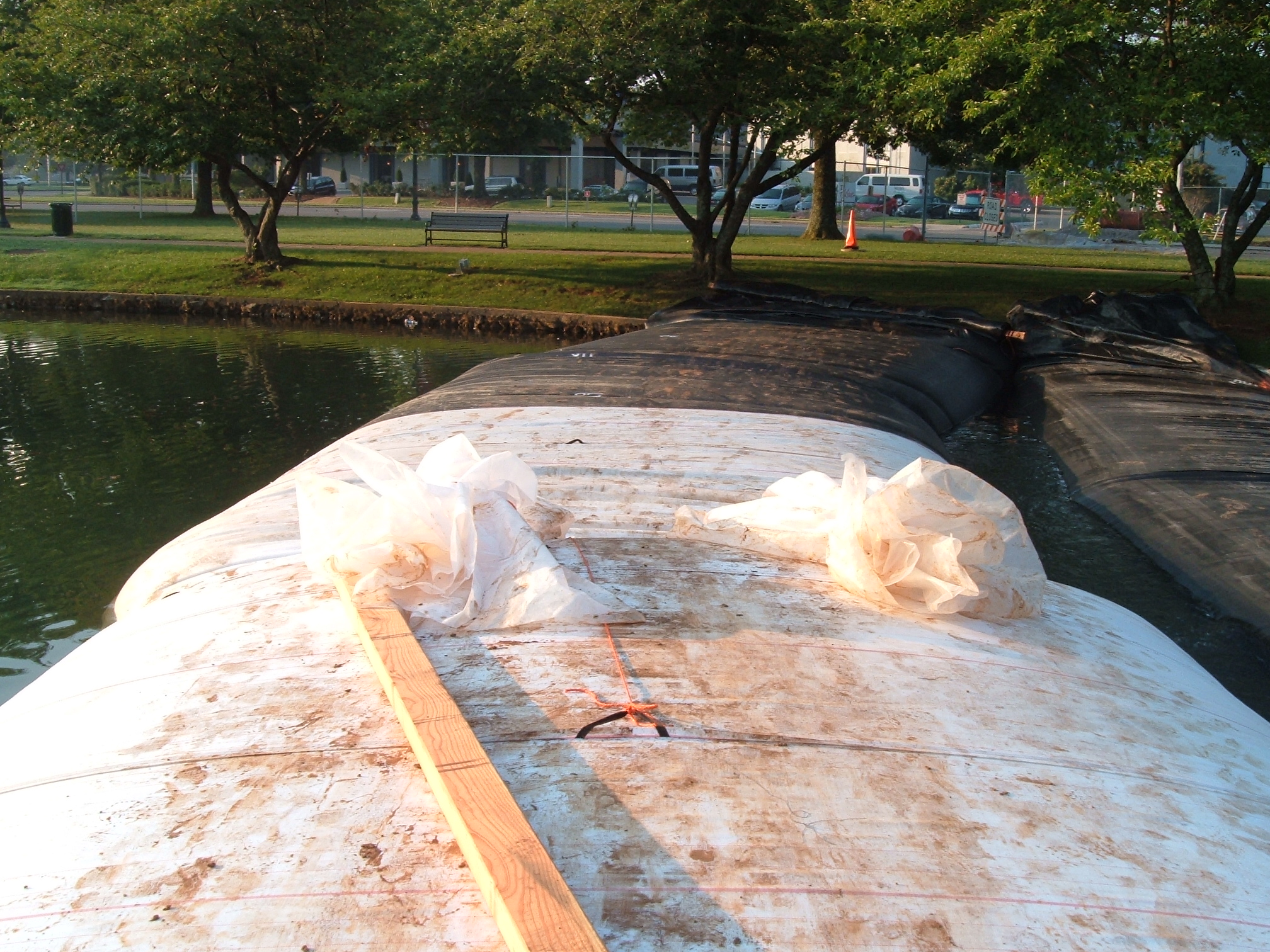
14.) The fill-tubes of the second main SCE AquaDam can be seen here, tied up and laying on top of the first dam.

15.) Looking towards the greater body of water, after de-watering has started.
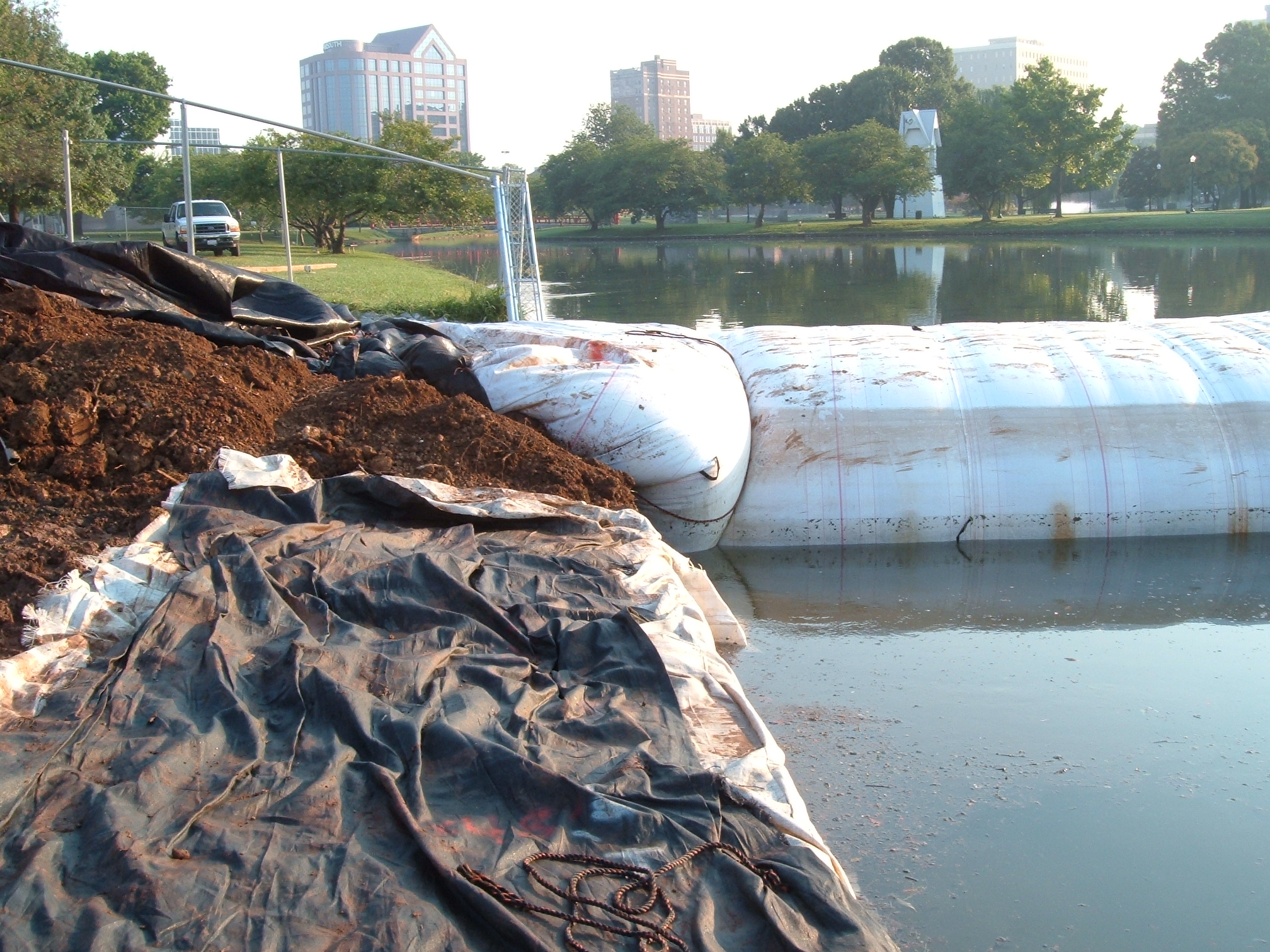
16.) The bank here has a vertical drop, right at the water edge and this AquaDam had no problems sealing.
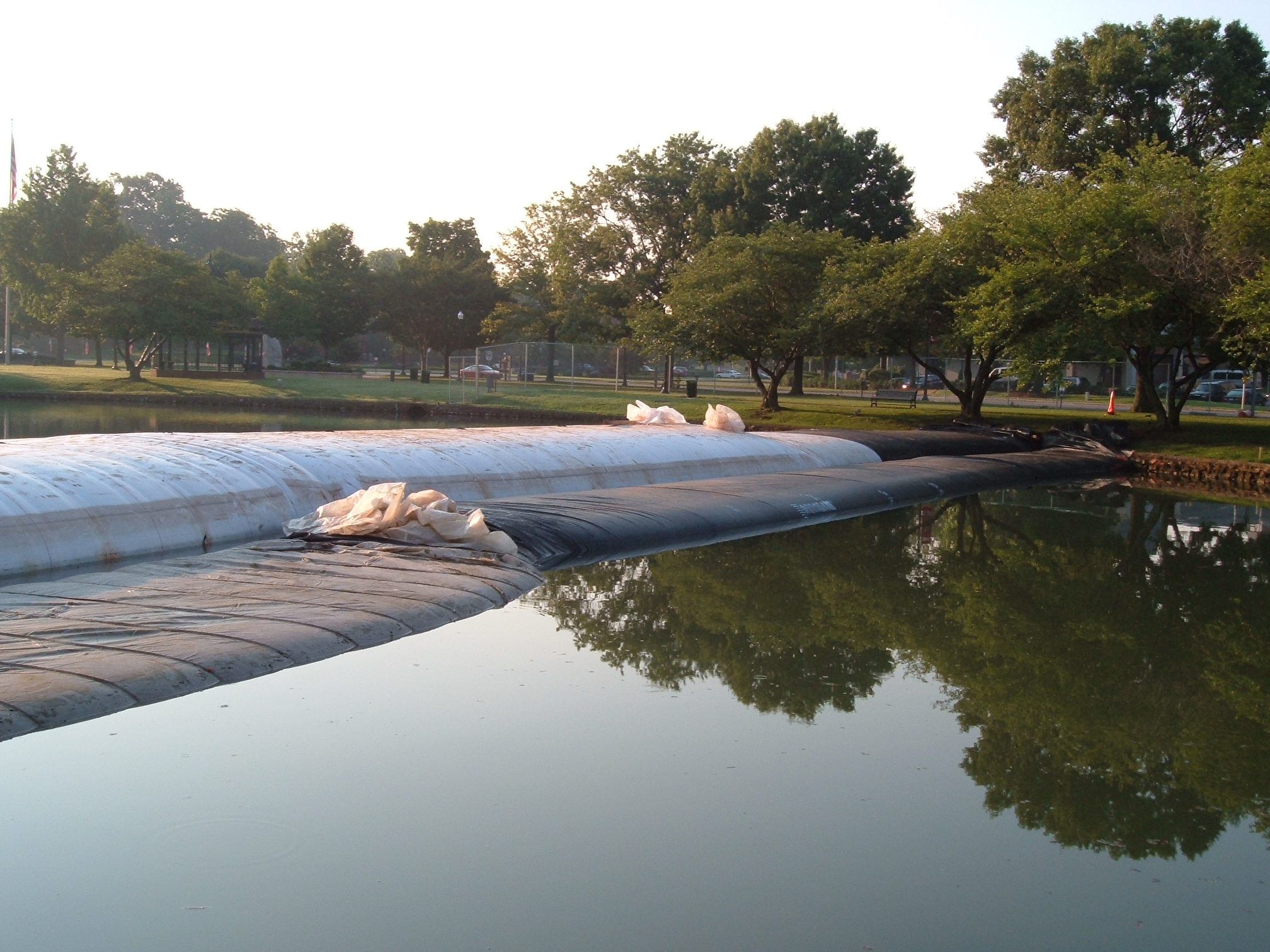
17.) A photo from the work area side as the area is de-watered.
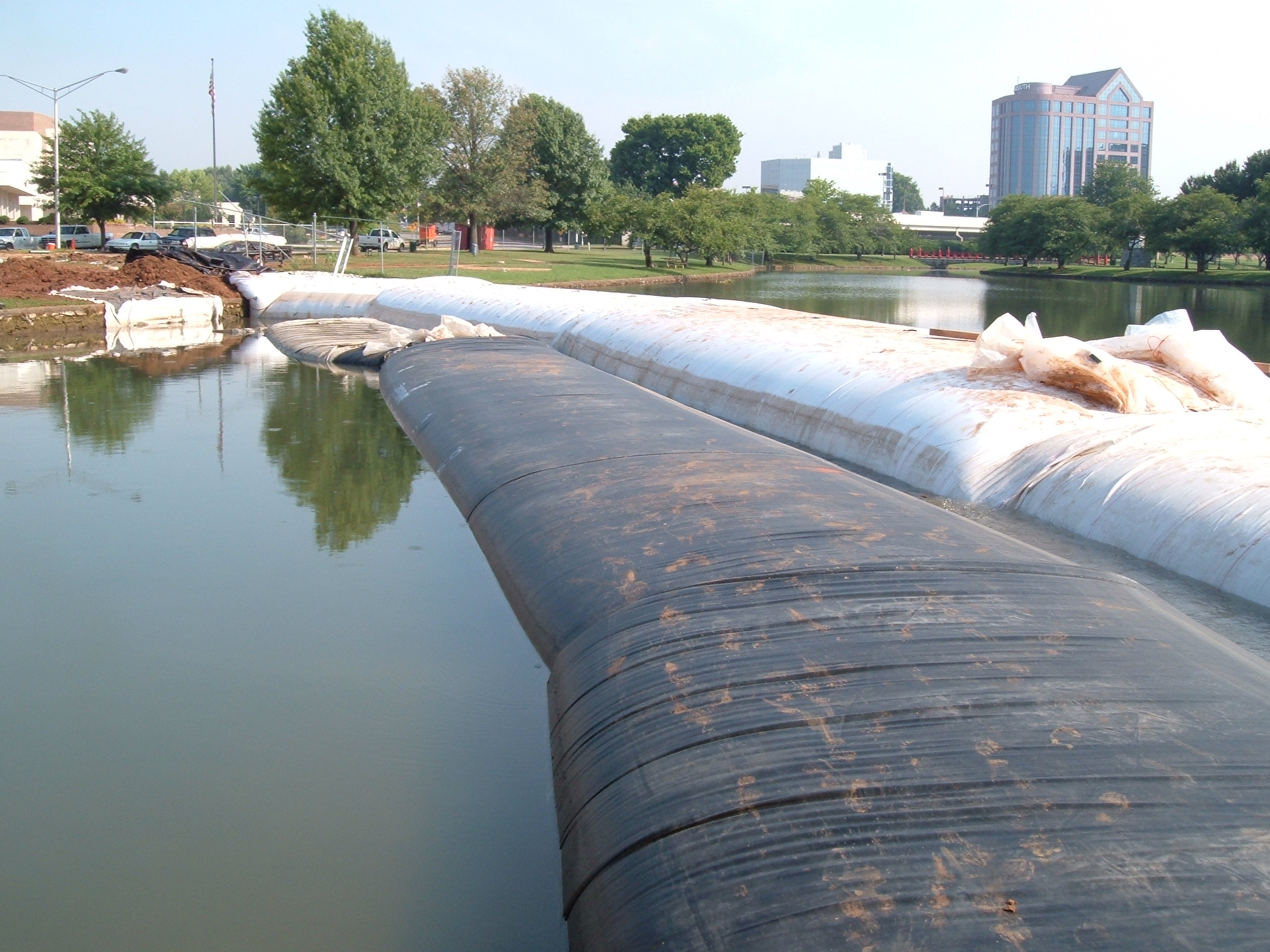
18.) The work area continues to de-water.

19.) The Japanese Friendship Bridge that goes over Big Spring can be seen just below the tall building with lots of windows.
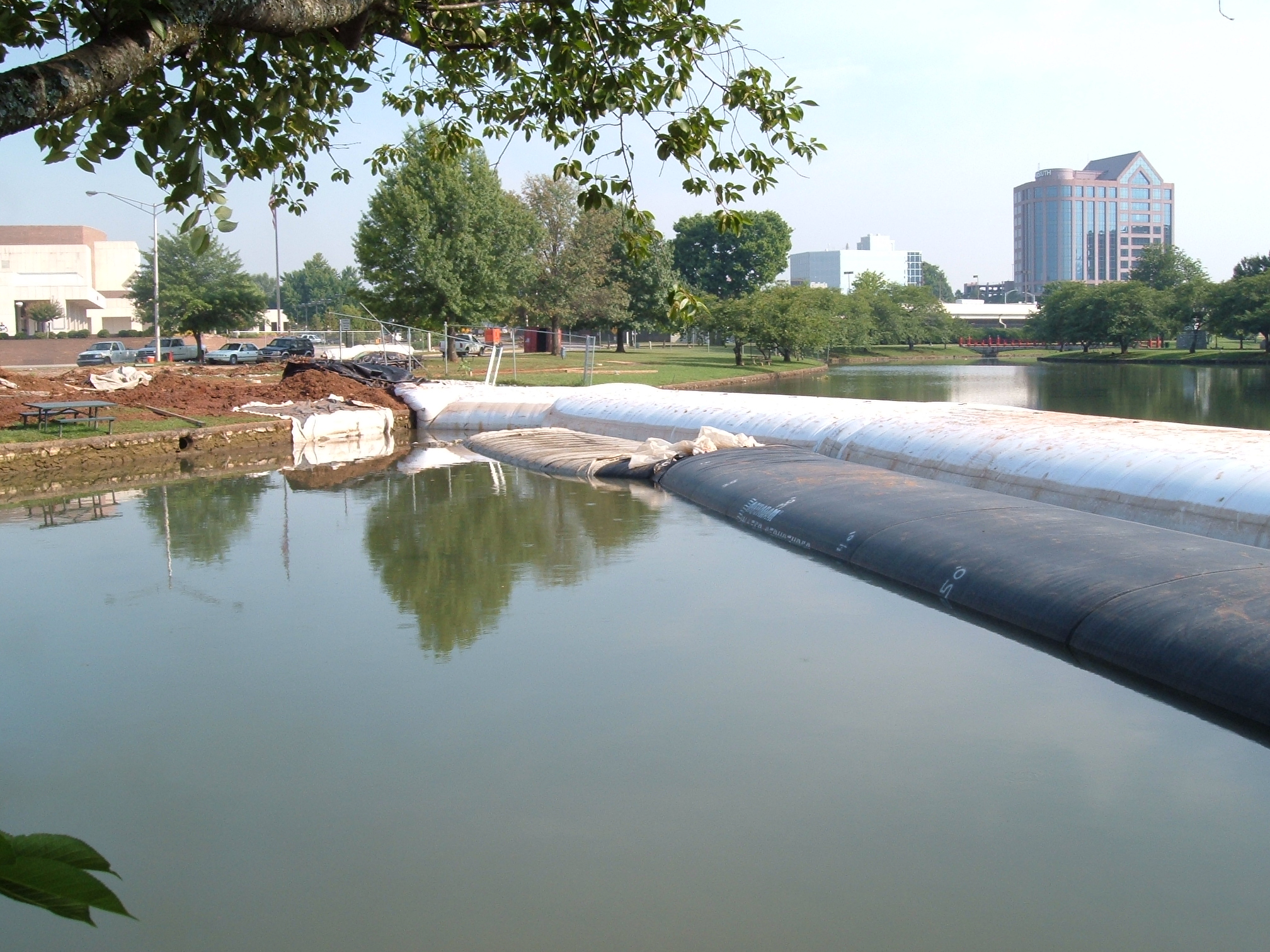
20.) There is at least a foot of difference between the work area and greater body water depths.
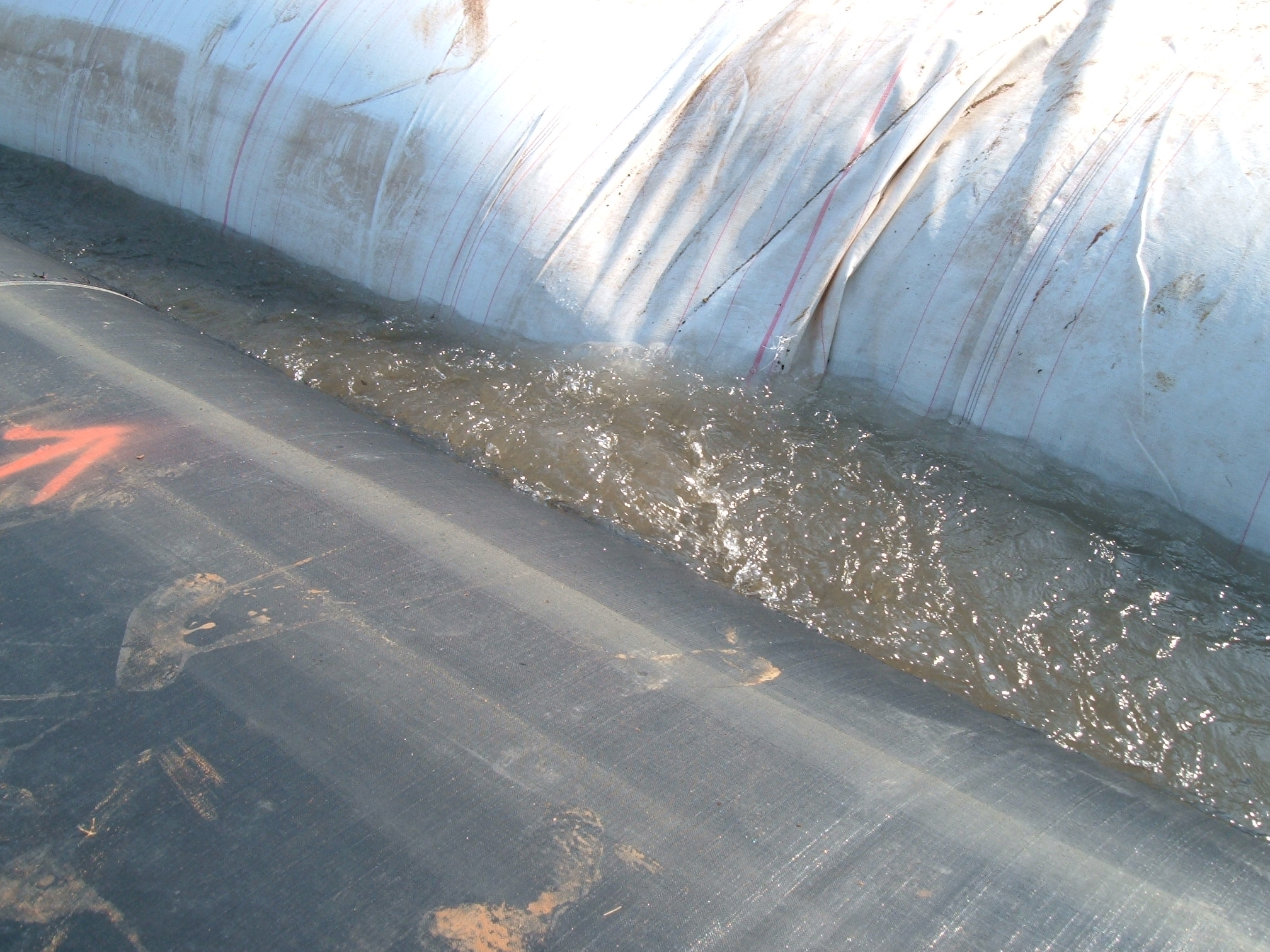
21.) More bubbling between the main and support AquaDams.
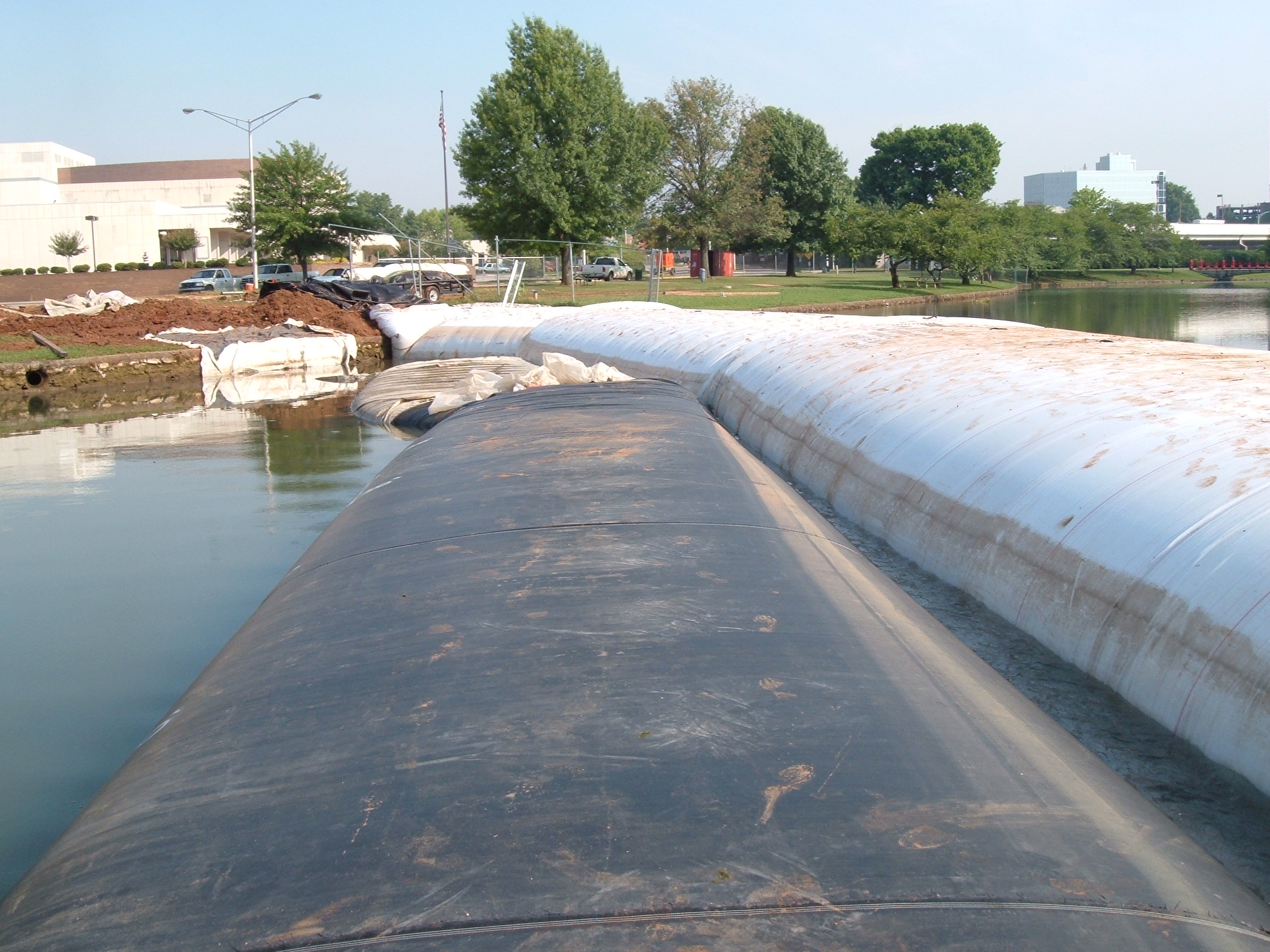
22.) The water depth between the support and main AquaDams is greater than that of the work area.
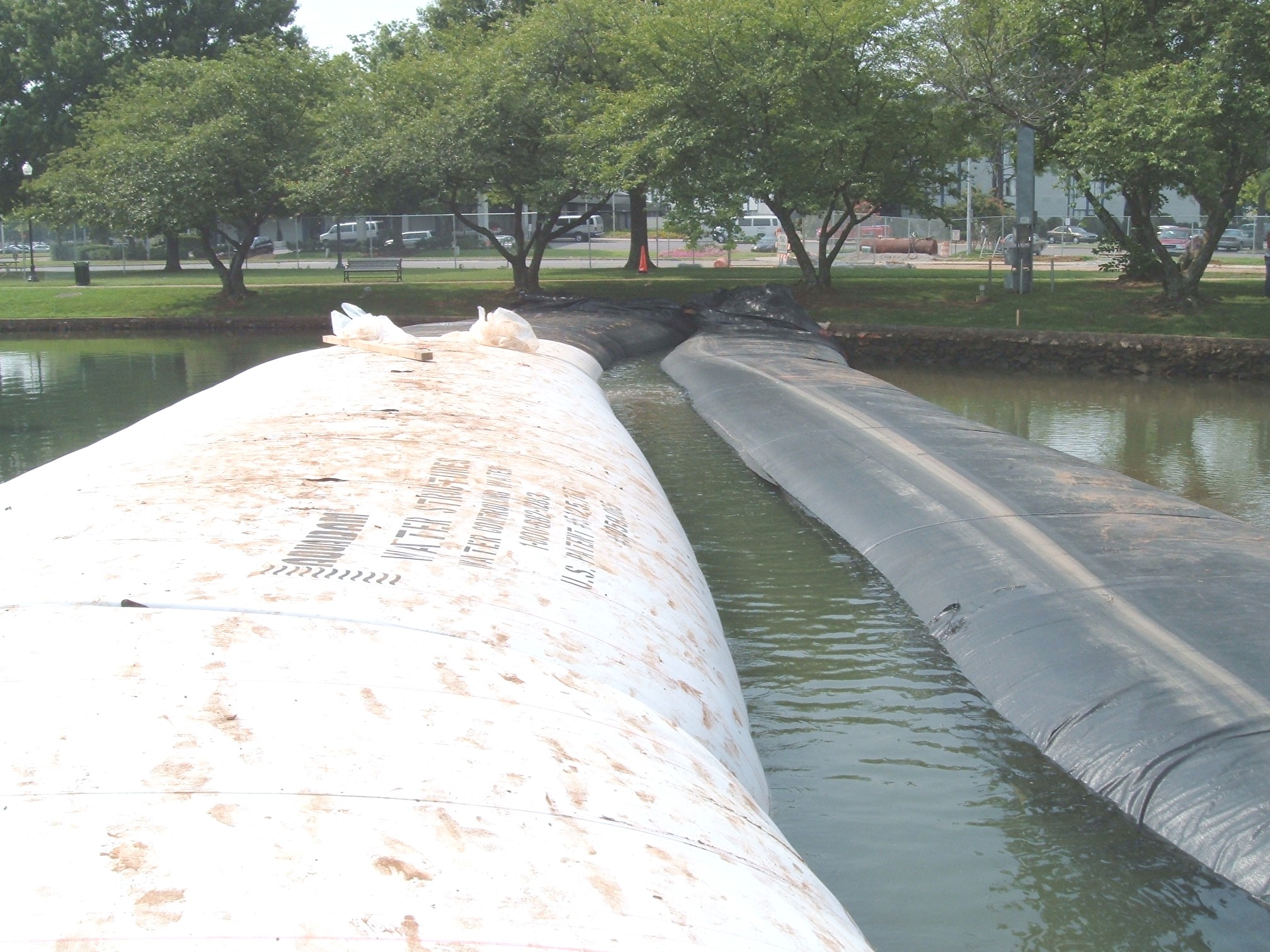
23.) Here is another angle showing the water depth greater between the support and main AquaDams than in the work area.
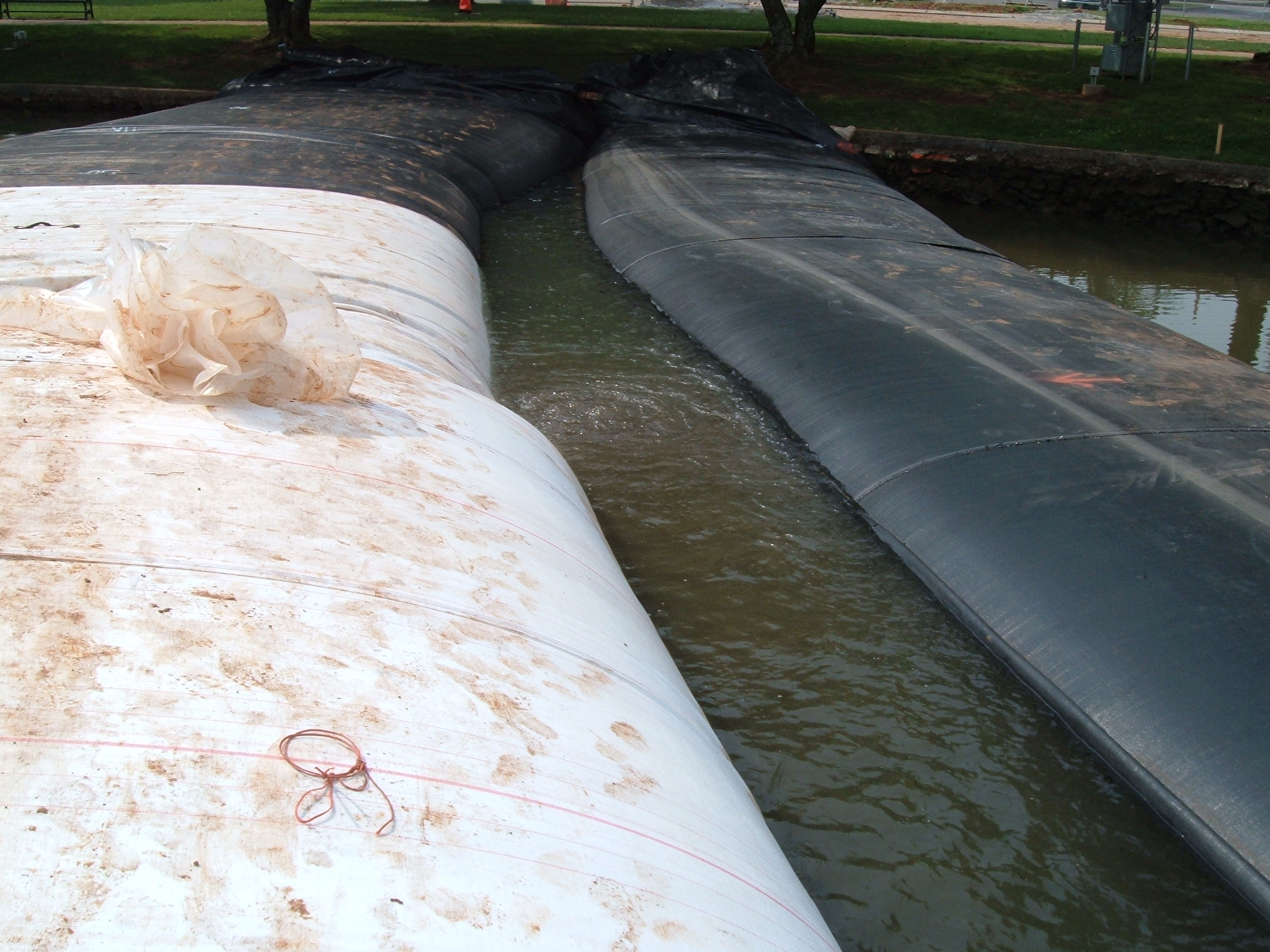
24.) Water is bubbling at the connection collar between the support and main AquaDams.

25.) Looks like the bubbling has settled down again.
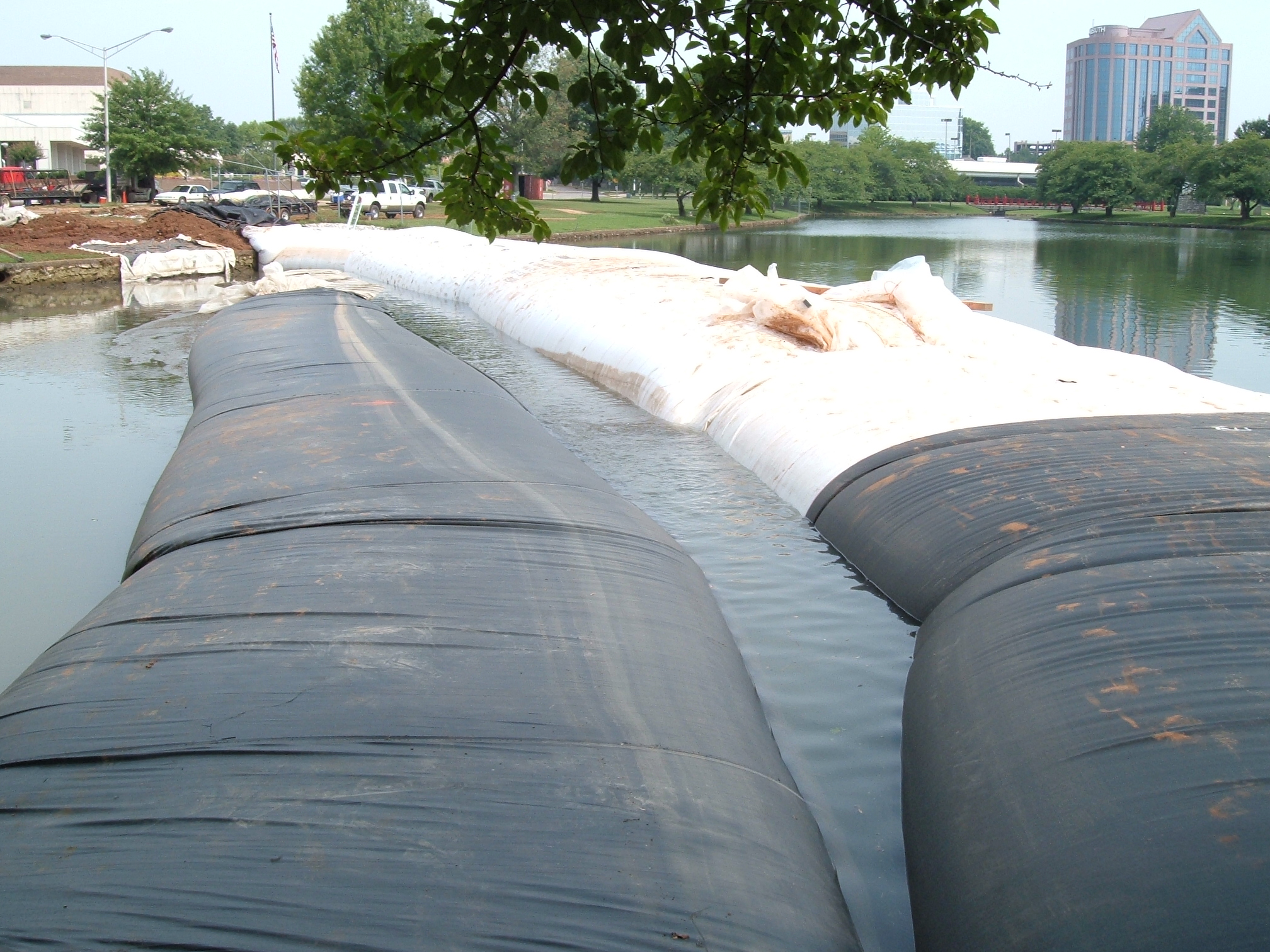
26.) The water depth between the support and main AquaDams is so deep that it has begun to run over the end of the last support dam.
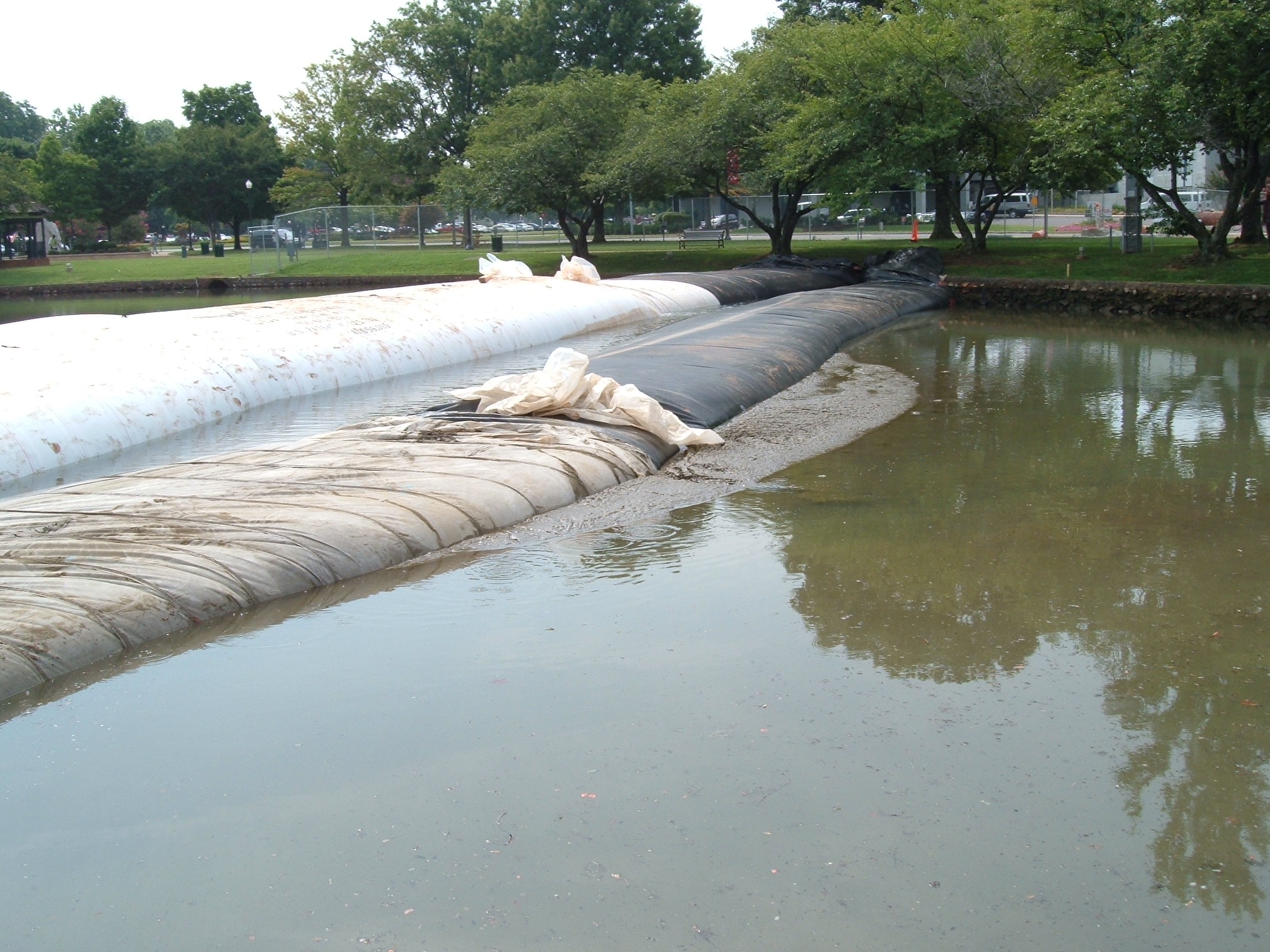
27.) Mud has been squished up almost the height of the full support AquaDams.
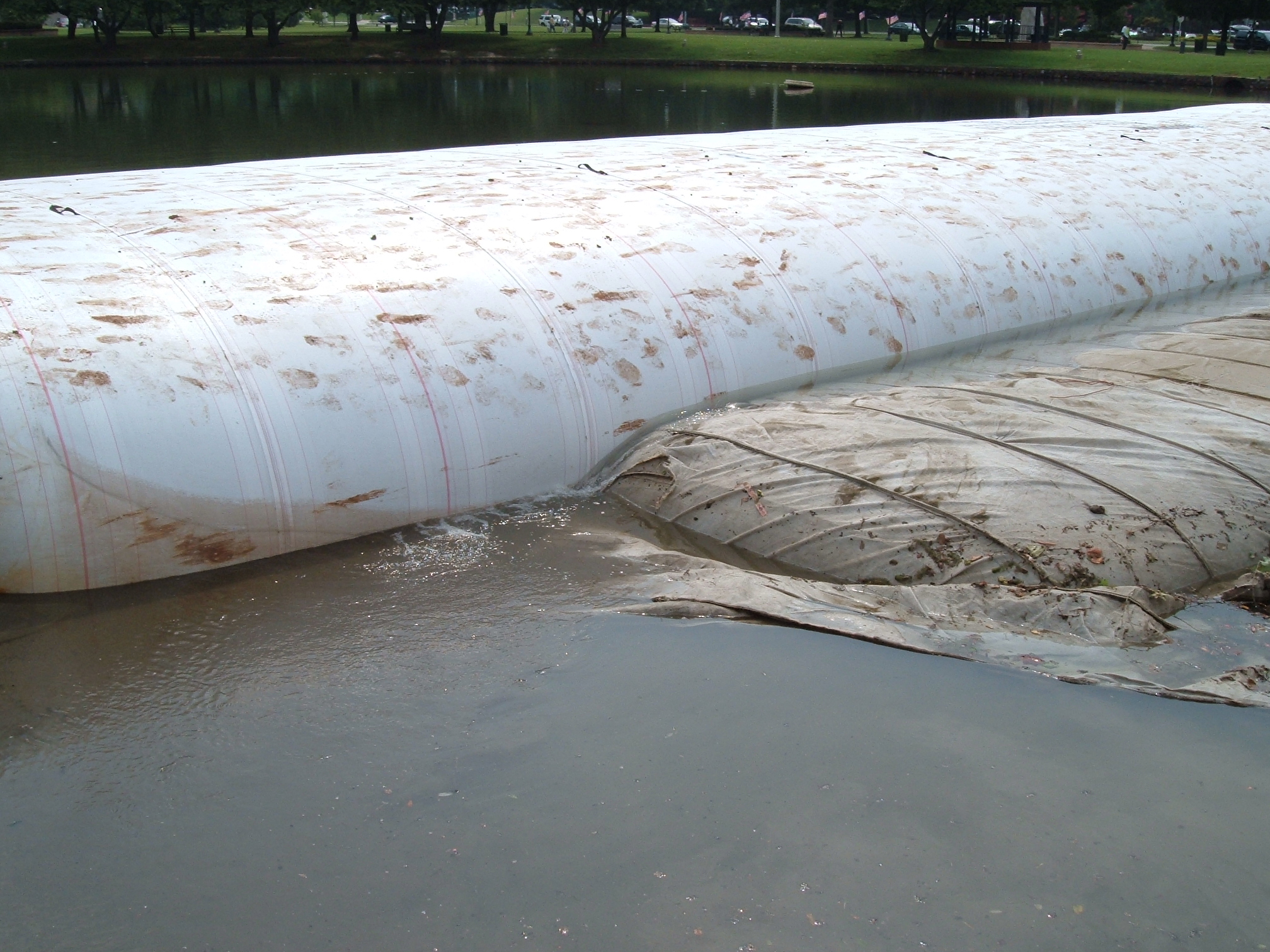
28.) Here we can see the water running out from between the support and main AquaDams.
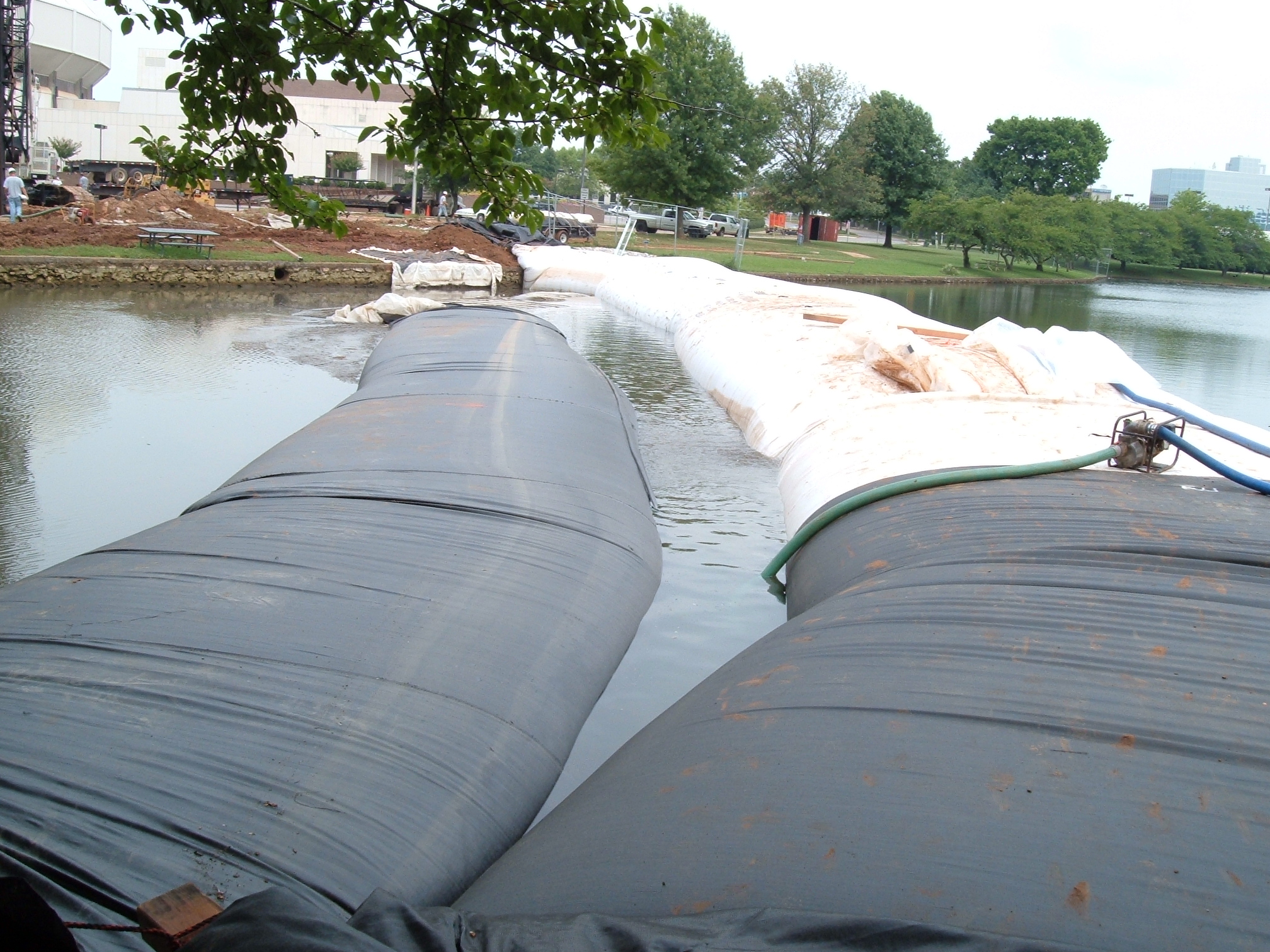
29.) A pump was used to help remove water from between the support and main AquaDams.
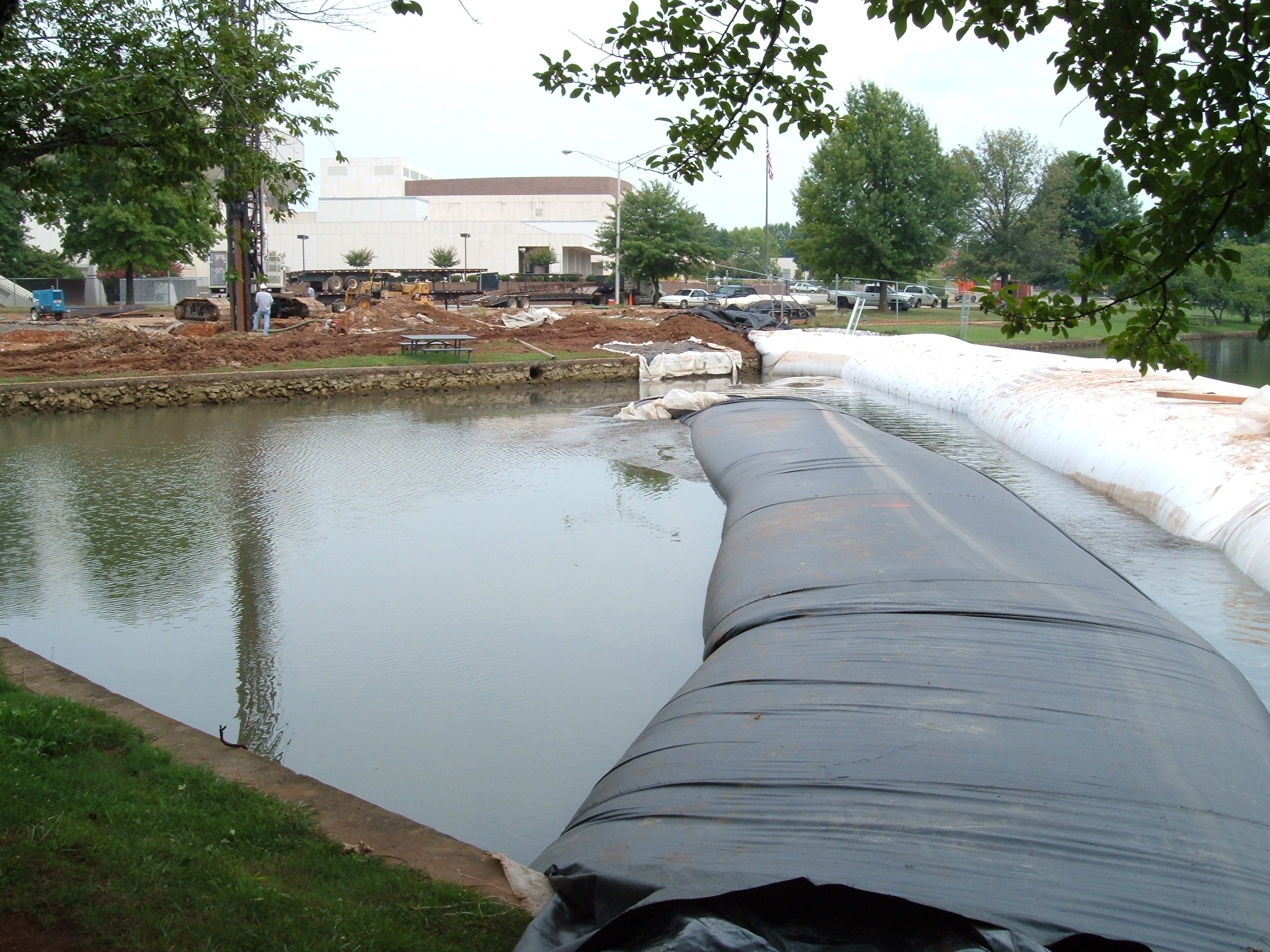
30.) The water depth between the support and main AquaDams has started to wash out the last support dam.
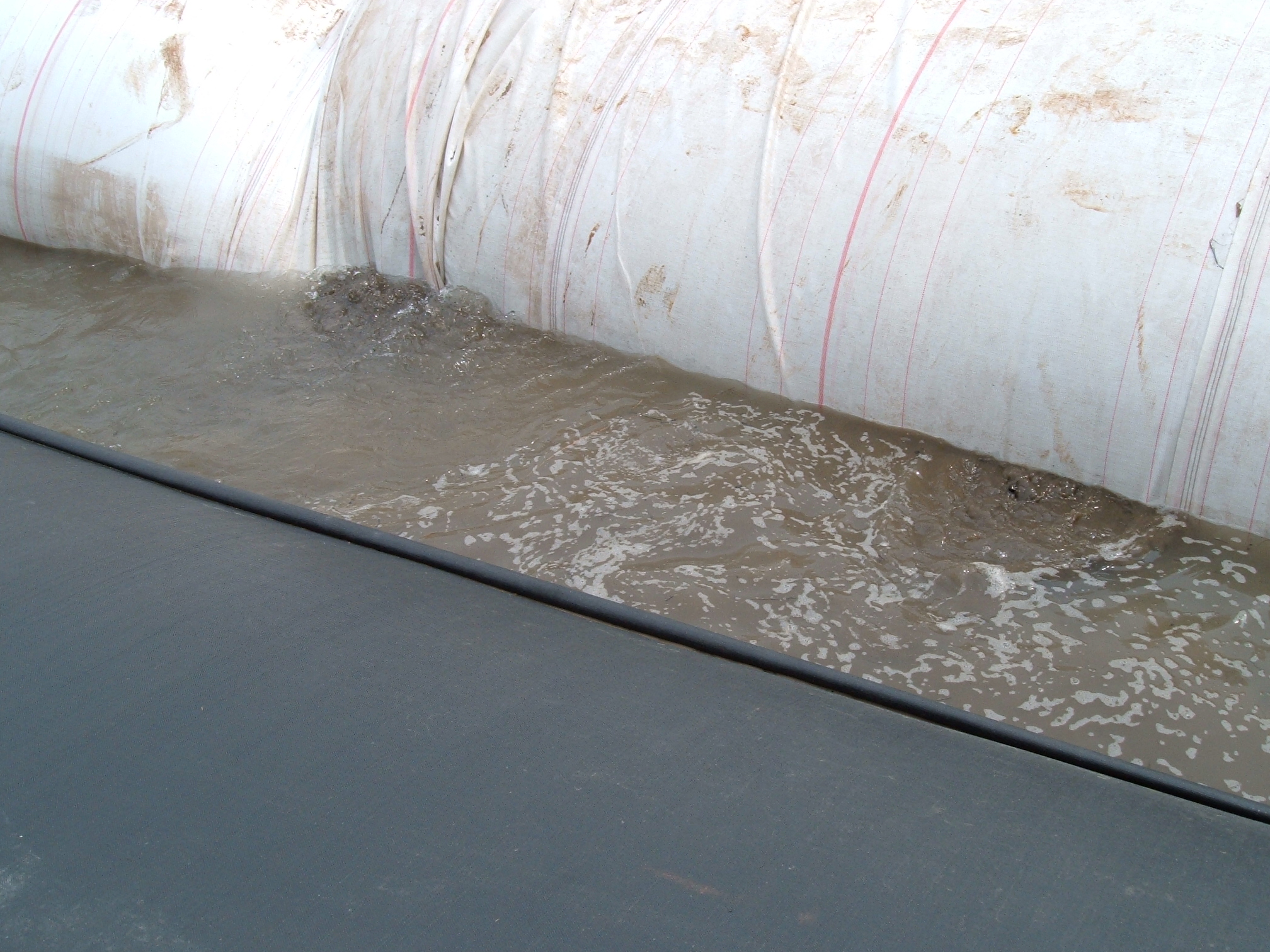
31.) More bubbling between the support and main AquaDams.
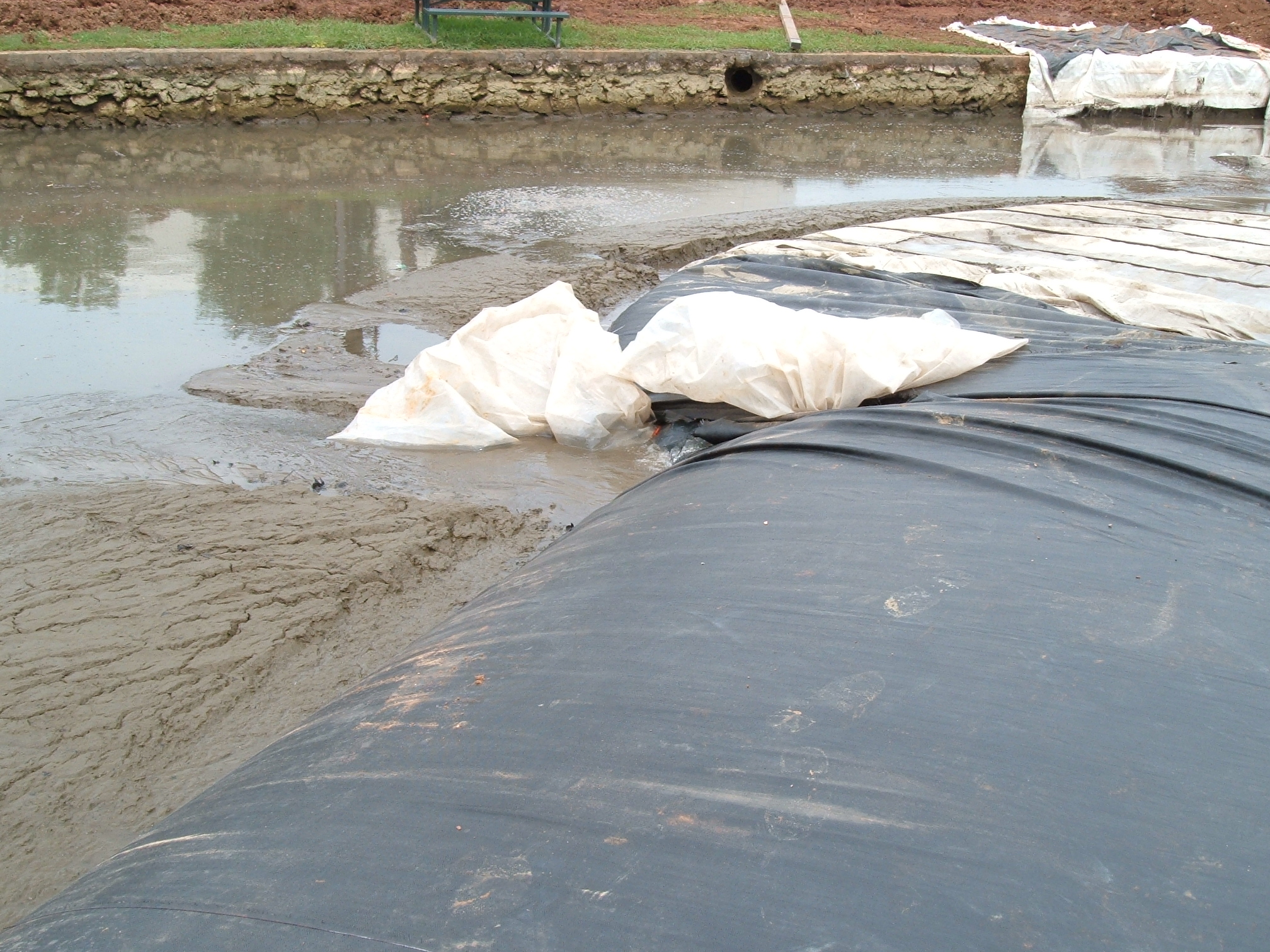
32.) The last support AquaDam has almost washed out. The fill-tube on the left is below the top of the dam it belongs too.
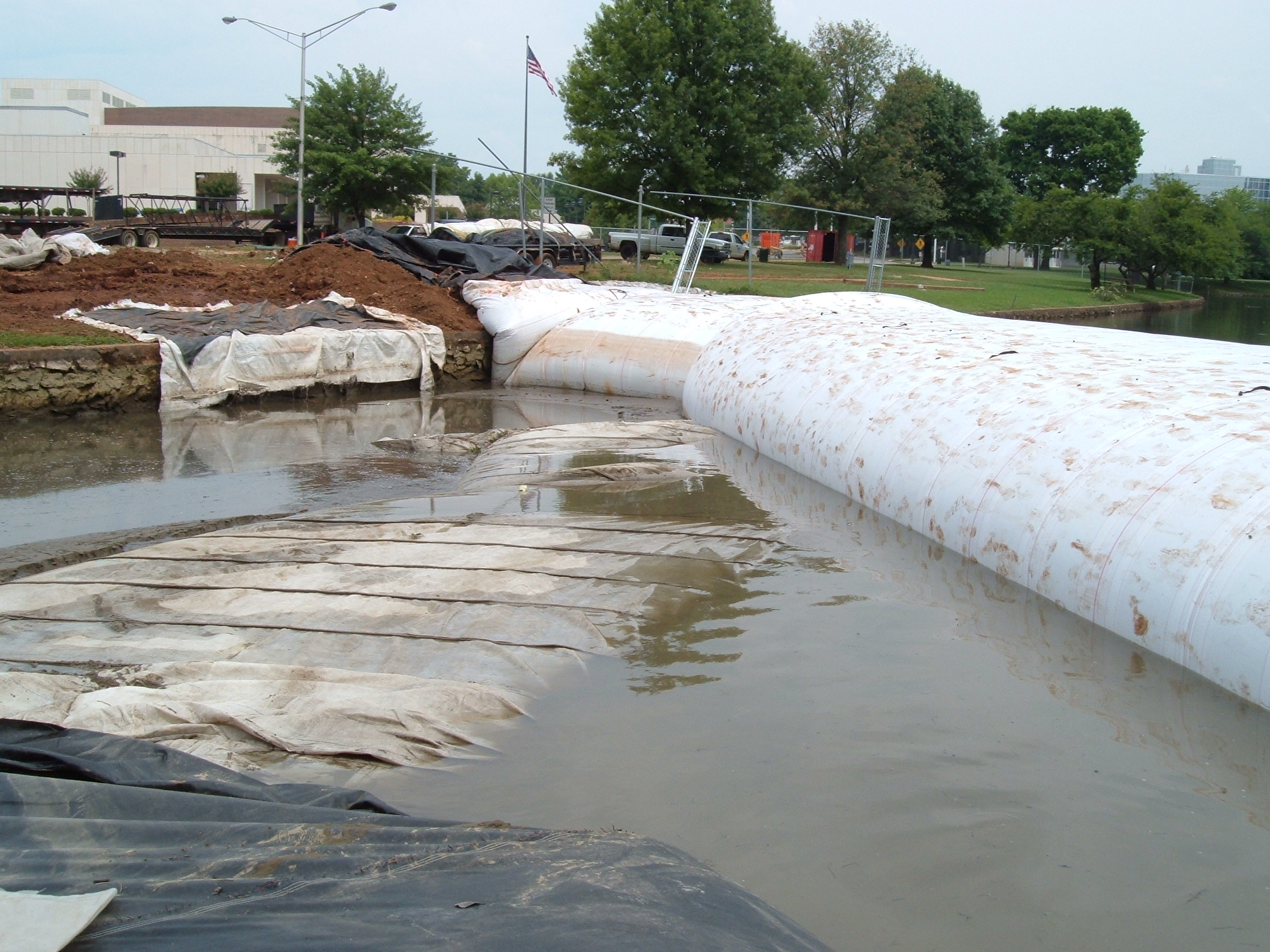
33.) The last support AquaDam has lost most of the water from inside and become flaccid. AquaDams are made of light weight flexible materials and will float when empty in deep enough water.
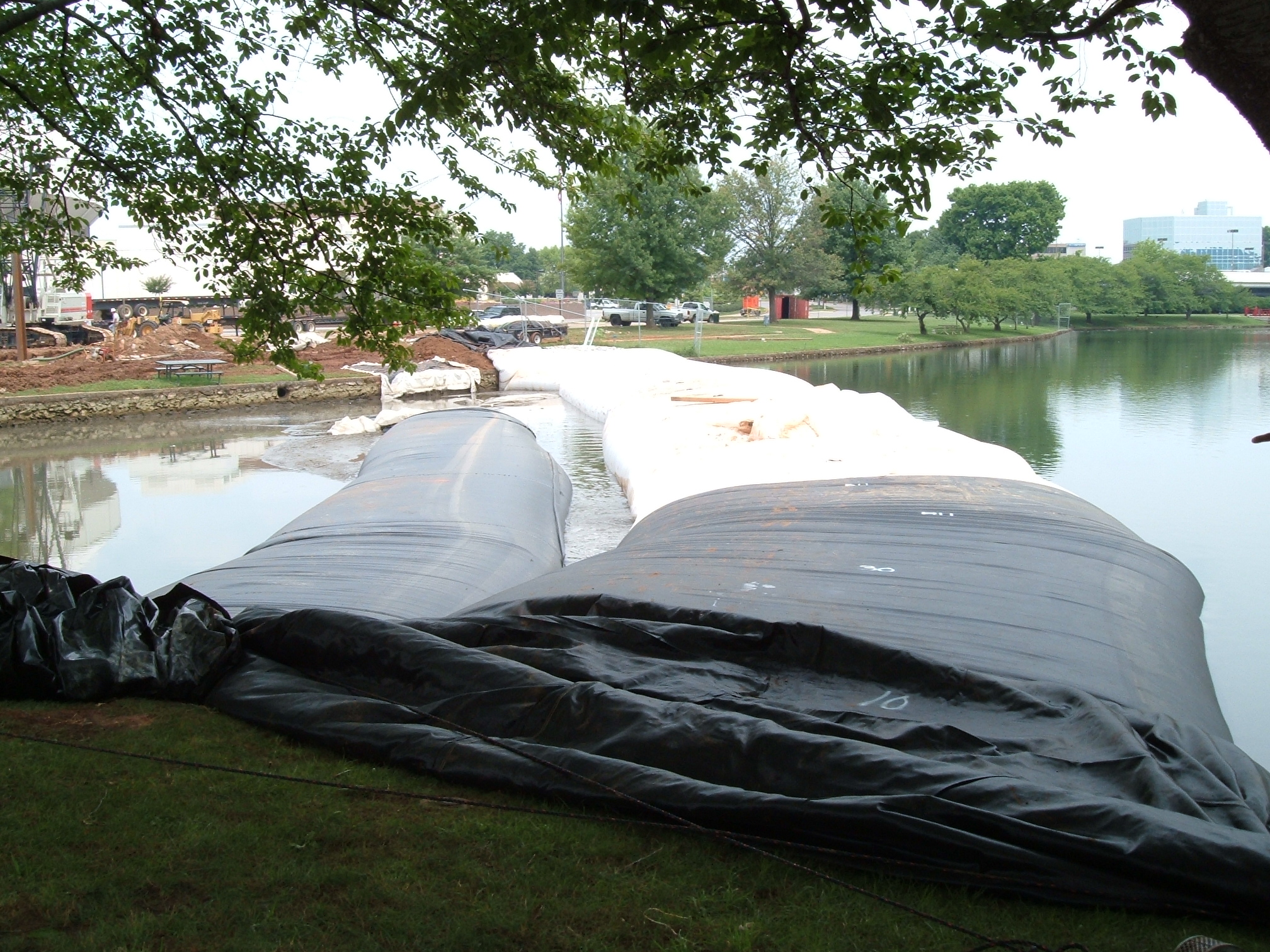
34.) The bubbling has subsided, the work area can finish de-watering.
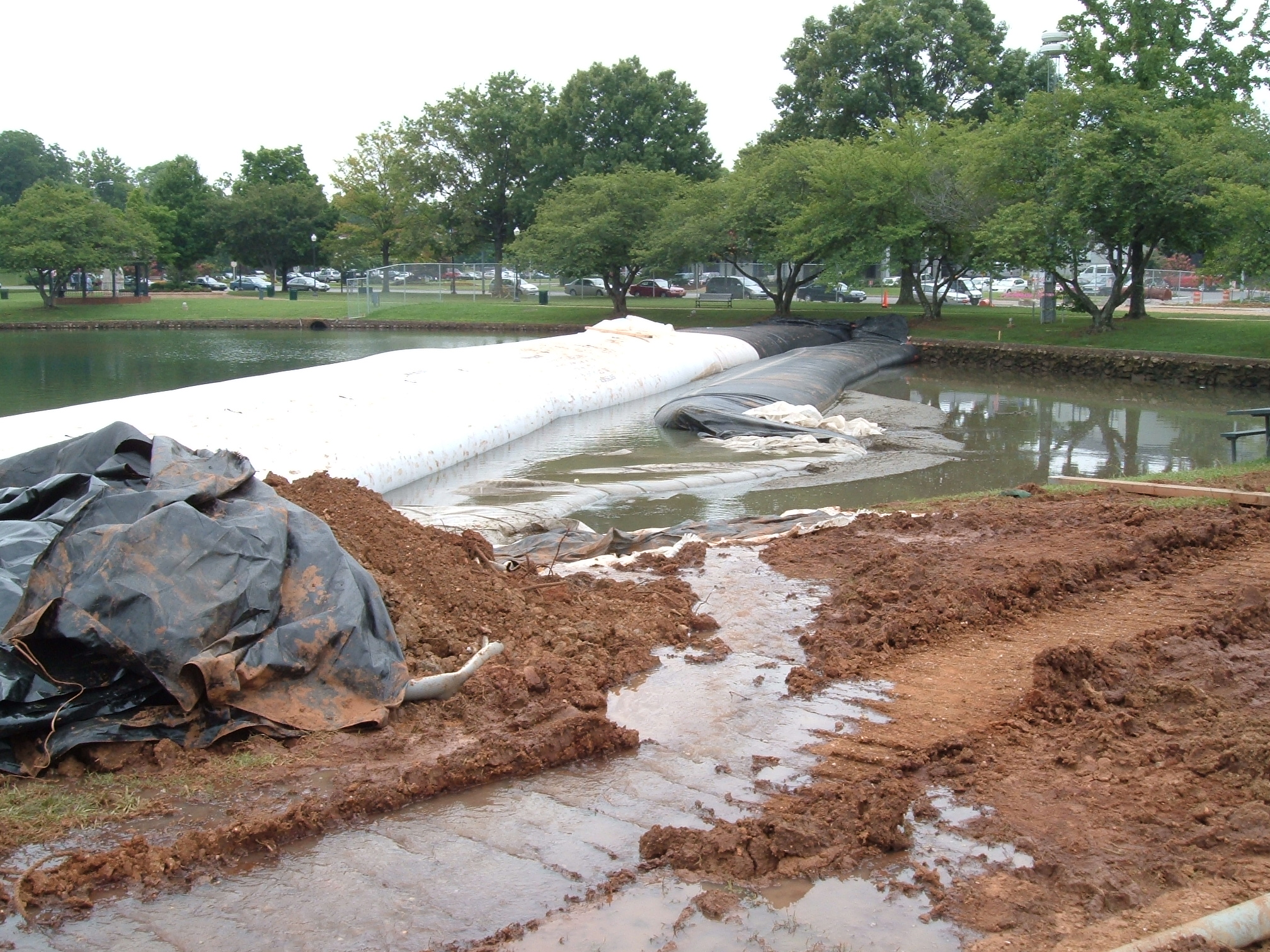
35.) Great job AquaDam!
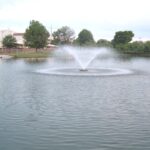
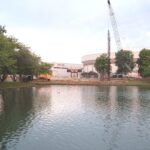
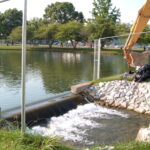
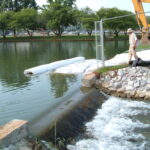
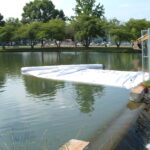
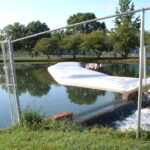
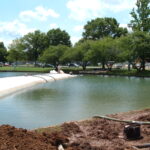
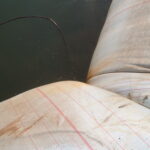
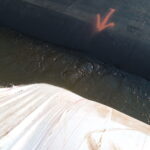

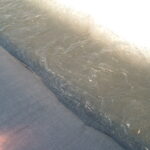
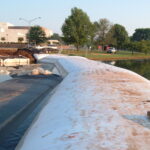
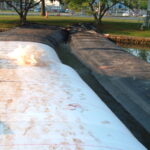
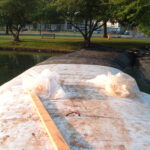
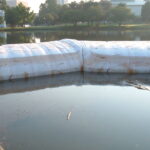
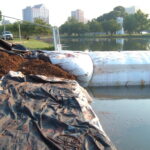
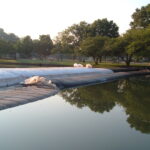
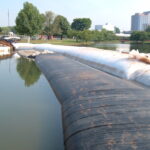
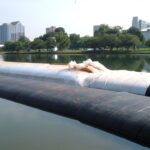
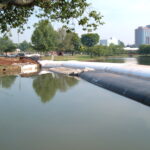
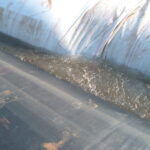
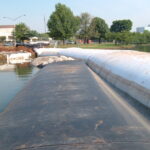
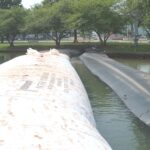
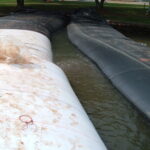
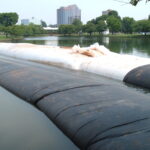
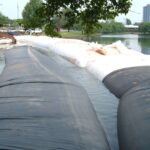
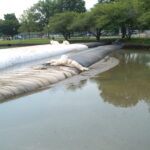
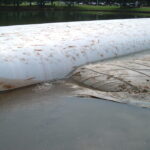
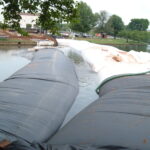
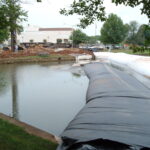
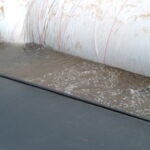
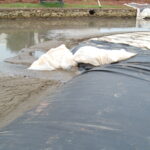
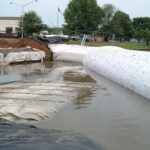
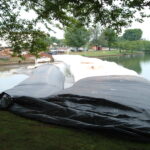
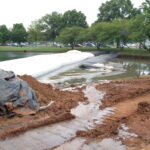
Four AquaDams, Big Spring at Von Braun Center, Manmade Pond, Horseshoe/”U” Shape Configuration
